
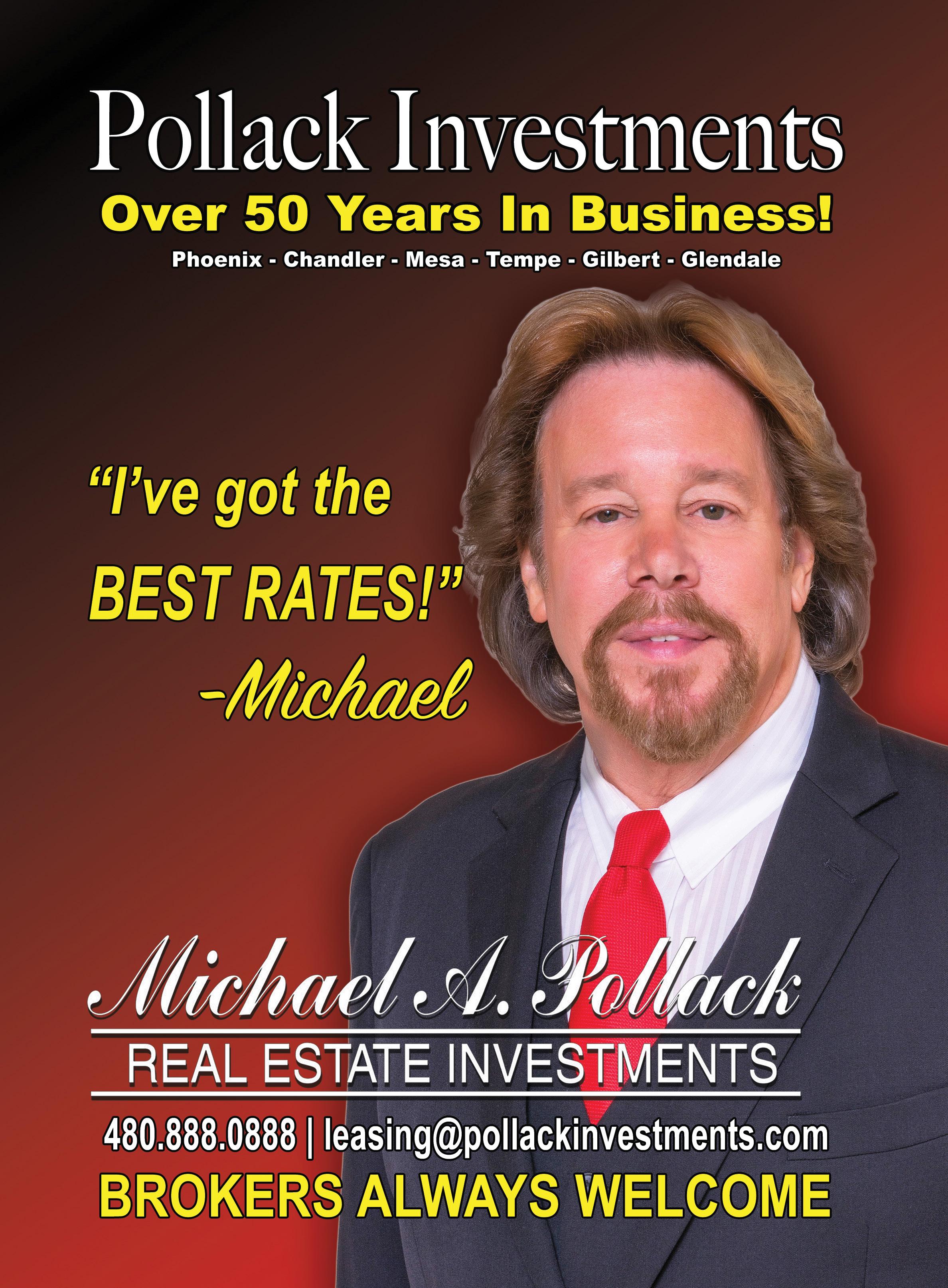





One of commercial real estate’s leading annual awards ceremonies, the Best of NAIOP, celebrated 30 years of recognizing the top-performing people, companies, and projects. The Arizona Chapter of NAIOP bestowed awards in 36 categories before a crowd of 1,030 commercial real estate professionals. Here are some of the winners:
Architect of the Year: Deutsch Architecture Group
Brokerage Firm of the Year: CBRE Firm of the Year: ViaWest Group
General Contractor of the Year: Layton Construction
Industrial Owner/Developer of the Year: Prologis
Interior Architect of the Year: Phoenix Design One
Multifamily Owner/Developer of the Year: High Street
Residential/Trammell Crow Company
Office Owner/Developer of the Year: Lincoln Property Company
Retail Owner/Developer of the Year: Barclay Group
Subcontractor/Vendor Firm of the Year: Suntec Concrete
Tenant Improvement Contractor of the Year: Stevens-Leinweber Construction
Title/Escrow Firm of the Year: Chicago Title Arizona
Developing Leader of the Year: Lauren Lovell, CBRE
Emerging Broker of the Year: Jonathan Teeter, CBRE
Healthcare Broker of the Year: Kidder Mathews Healthcare Advisory Services, Kidder Mathews
Industrial Broker of the Year: Mike Haenel, Andy Markham and Phil Haenel, Cushman & Wakefield
Investment Broker of the Year: Will Strong, Cushman & Wakefield
Multifamily Broker of the Year: Asher Gunter, Matt Pesch, Sean Cunningham and Austin Groen, CBRE
Office Broker of the Year: Williams, Medley, Corney, Robinson, Setnar Team, JLL Phoenix
Retail Broker of the Year: Neil Board, Western Retail Advisors
Tenant Representative Broker of the Year: Chuck Nixon, Dave Barrett, Mike Ragland and Michael Sokol, CBRE
For a complete list of winners, visit azbigmedia.com.
President and CEO: Michael Atkinson
Vice president and publisher: Amy Lindsey
EDITORIAL
Editor in chief: Michael Gossie
Associate editor: Kyle Backer
Staff writer: Lux Butler
Contributing writer: Clark Princell
Intern: Isaac Chavez
ART
Creative services manager: Bruce Andersen
Chief photographer: Mike Mertes
Junior graphic designer: Leslie Durazo
MARKETING/EVENTS
Marketing and events director: Jacque Duhame
OFFICE
Director of finance: Sara Fregapane
Operations coordinator: Michelle Zesati
Database solutions manager: Amanda Bruno
AZRE | PTK
Director of sales: Ann McSherry
AZ BUSINESS MAGAZINE
Sales manager: April Rice
Account executive: Tom Allen | Maria Hansen | Lula Hunteman
AZ BUSINESS LEADERS
EXPERIENCE ARIZONA | PLAY BALL
Director of sales: David Harken
RANKING ARIZONA
Director of sales: Sheri King
AZRE: Arizona Commercial Real Estate is published bi-monthly by AZ BIG Media, 3101 N. Central Ave., Suite 1070, Phoenix, Arizona 85012, (602) 277-6045. The publisher accepts no responsibility for unsolicited manuscripts, photographs or artwork. Submissions will not be returned unless accompanied by a SASE. Single copy price $3.95. Bulk rates available. ©2025 by AZ BIG Media. All rights reserved. No part of this publication may be reproduced or transmitted in any form or by any means, electronic or mechanical, including photocopying, recording or by any information storage and retrieval system, without permission in writing from AZ BIG Media.




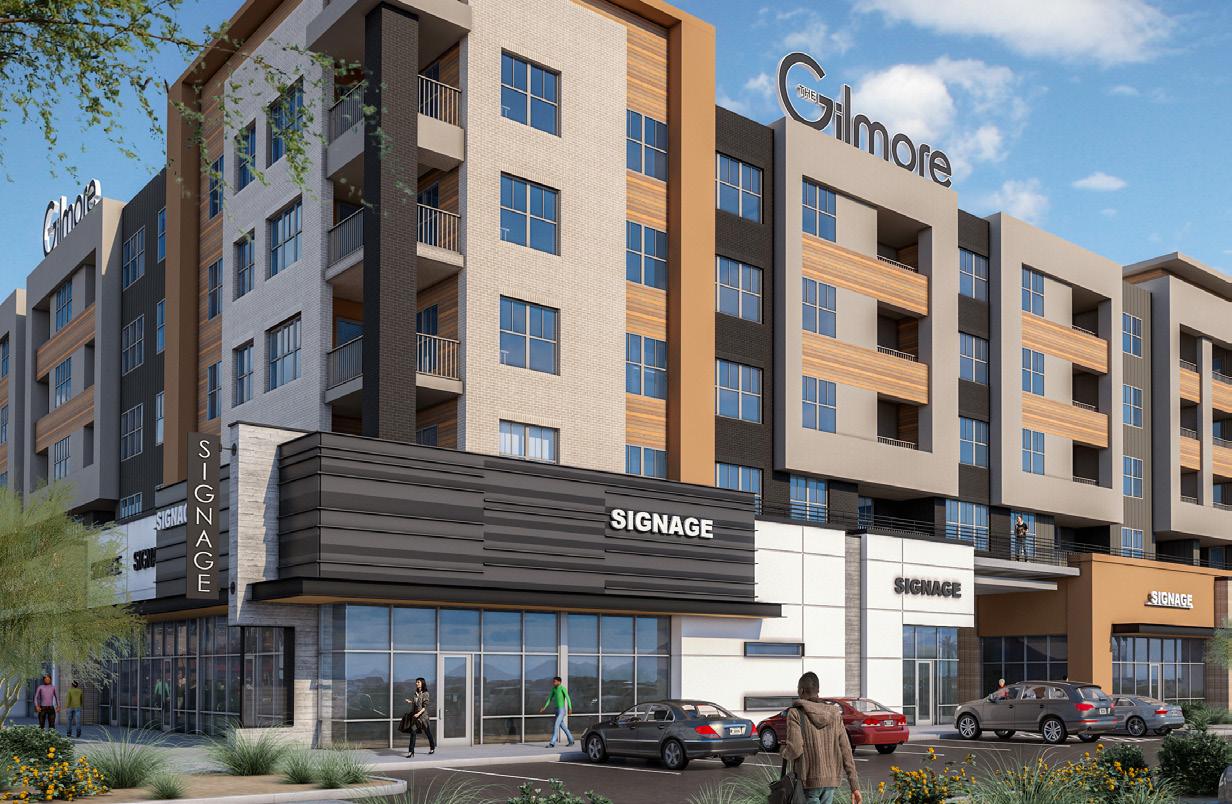


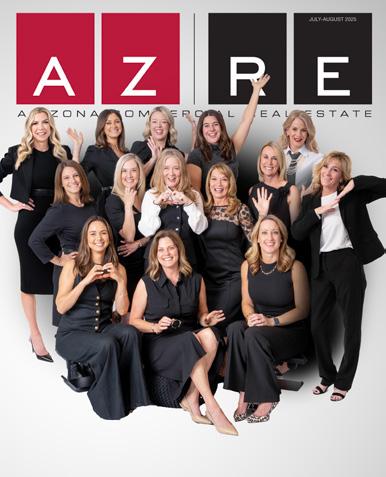







s the Phoenix commercial real estate market evolves, property owners and investors are navigating shifting demand, leasing complexities and market uncertainty. Casey Blais, a real estate attorney and partner at

“Lease and loan defaults are an important trend we’re always keeping a pulse on. Right now, both the office and the retail side are holding steady.”

“The main concerns for property owners and property managers are making sure that people continue to pay rent. They’re constantly watching that and balancing giving folks time to be late and eventually pay rent. Overall, I’m not seeing major default numbers.”
Burch & Cracchiolo, works closely with clients on issues ranging from landlord-tenant disputes to commercial evictions across the Valley.
Blais shared his thoughts on market trends, legal risks and the growing demand for industrial space.

“We’re seeing strength in the industrial realm, but the office sector is a little bit questionable. Vacancies are still fairly high, but more businesses are going back to the office.”


“A lot of companies have downsized their office space to the extent they’re able to, and those looking for new space are more conservative in the amount they want.”

“What we’ve seen over the last decade is more higher-end industrial parks and warehouses for companies engaged in e-commerce. I think we’ll see continued growth in that area in the coming years.”














From site selection to the final inspection, construction is a complex process requiring collaboration across many disciplines. One group of professionals who contribute to
the finished feel of a project are landscape architects — even though their work is more subtly experienced than viewing a shiny, new structure.

“We’re often seen as the tree people, but nature-based solutions can result in cost savings. For example, underground water storage costs a lot of money. But why pay for tanks when you can keep that water on site or at grade level? We understand topography, and that knowledge can help inform where to place a building or an outdoor space. Most people don’t know we can help with those things.”
— Marc Beyer, principal at TRUEFORM Landscape Architecture Studio

“Landscape architects connect people to nature and to each other. The benefit for the commercial world is that it makes those spaces much more sought after. We don’t care if the person working in the building can point out why they love a particular space, but we use nature to make places more comfortable, appealing and memorable.”
— Todd Briggs, principal at TRUEFORM Landscape Architecture Studio
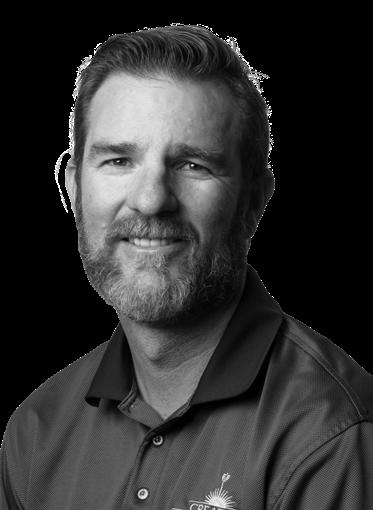
“As part of the visioning process, we find out what the space requires. What should the customer experience be as they move through it? That informs the design and how everything flows together. Finding those touch points is what makes people feel like they’re walking through a first-class resort or up to a high-end restaurant.”
— Ted Cambell, director of marketing at Creative Environments
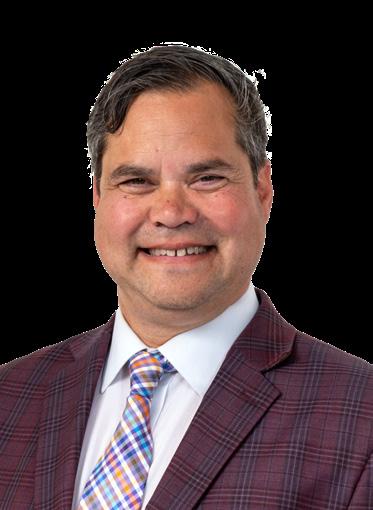
“We have a strong belief regarding the environmental needs of our Valley and that projects should have the appropriate land ethic to help us continue to live here. It’s important for our profession to be engaged in sustainability and make sure people are thinking about how to use less water and be good stewards of nature.”
— Roger Socha, principal at TRUEFORM Landscape Architecture Studio


























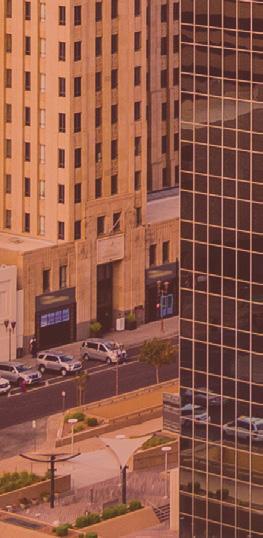














Seeing a development through from conception to completion is a difficult endeavor, even for industry veterans. To help make projects a reality, many cities and states offer
“Community Facility Districts, or CFDs, help build the infrastructure that municipalities need by having developers do it, then reimbursing them through the sale of bonds, which are paid off by the future value created.”
“Arizona’s system is set up to be reimbursement only, which makes it safer for taxpayers because it protects them from interest payments if the market slows. However, if we could access those development dollars sooner, we wouldn’t have to go get expensive capital — making it harder to develop affordable products.”
“Some states will just write checks, and that’s hard to compete with. But in terms of having a sustainable economic development toolkit, using the value created to finance the infrastructure is the most sustainable way to do it.”
A Community Facilities District is a special district for financing the installation of infrastructure essential for further growth and development. Under state law, cities
mechanisms to lower financial barriers. But how does Arizona stack up against the competition? Here’s what Tim Brislin, president of Harvard Investments, has to say.
“In Arizona, we have a narrower definition of what is reimbursable, but if you go to states like Texas and Florida, they include many more items, which helps facilitate development and affordability.”
“[These programs] often get villainized as a taxpayer giveaway to a developer, and that’s a difficult mindset to overcome. But if there isn’t a way for infrastructure to be developed and paid for over time, then you can’t properly build projects.”

can impose additional restrictions or choose not to use them at all, but many, such as Scottsdale, Phoenix and Peoria, do.
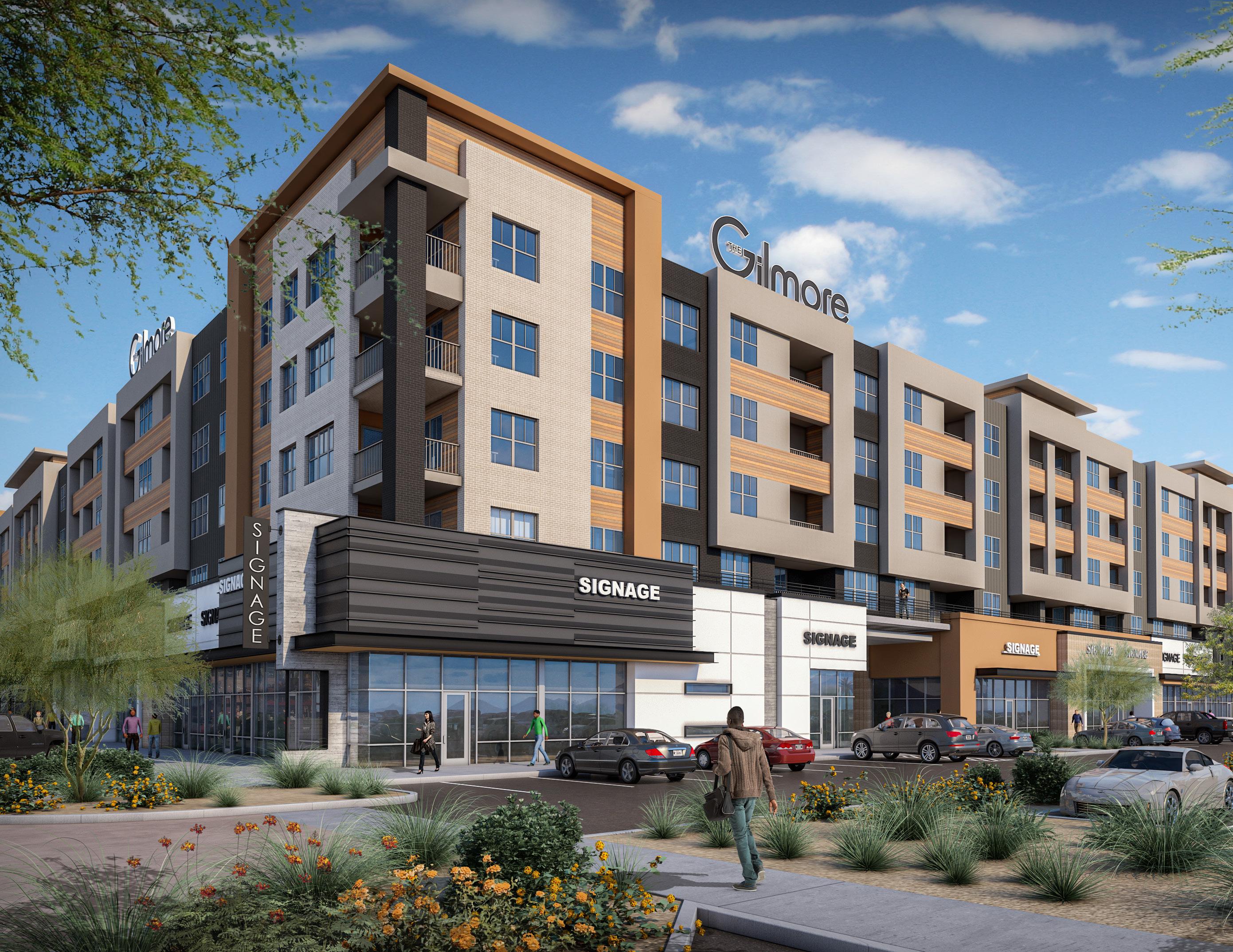
Developer: Thompson Thrift
General contractor: Thompson Thrift Construction
Location: Northwest corner of Val Vista Dr. and Germann Rd., Gilbert
Size: 35-acre mixed-use development
Value: $225 million
Start date: May 2025
Completion: Company expects retailers to begin opening in the latter half of 2026 and the first resident move-ins to begin in early 2027

Developer: Central Arizona Project
General contractor: Mortenson
Architects: Jones Studio
Location: North of Pinnacle Peak Road, west of 7th St., Phoenix
Size: 32,000 square feet
Start date: May 2025
Completion: Fall 2026

Developer: MC Companies
General contractor: Multifamily Building Specialist, a division of MC Companies
Architect: Dean Alan Architects
Location: Tucson’s Tanque Verde submarket
Size: 312 luxury units
Start date: May 2025
Completion: Move-ins by the end of 2026

1. Superstition Gateway East & West
Sale price: $121,000,000
Location: 1614-1959 S. Signal Butte Rd. and 10720-10746 E.
Baseline Rd., Mesa
Description: 489,434-square-foot retail power center
Buyer: Alvarez & Marsal Capital Real Estate
Seller: Desert Troon Companies
Broker: Lee & Associates
2. Soltra Kierland Apartments
Sale price: $107,500,000
Location: 7111 E. Tierra Buena Lane, Scottsdale
Description: 202-unit apartment complex
Buyers: Mohsin Ilyas and Ahmed Azizi
Seller: Leon Capital Group
3. Sight Logistics Park
Sale price: $103,050,000
Location: 6840 and 6860 S. Harl Ave., Tempe
Description: 357,103-square-foot industrial
Buyer: CBRE Investment Management
Seller: ViaWest Group
Broker: JLL
4. Bella Encanta
Sale price: $95,750,000
Location: 9745 E. Hampton Ave., Mesa
Size: 212-unit build-to-rent community
Buyer: JP Morgan
Seller: Bela Flor Communities
5. Broadstone Uptown Apartments
Sale price: $87,000,000
Location: 502 W. Camelback Rd., Phoenix
Size: 280-unit apartment complex
Buyer: ReNUE Properties
Seller: Alliance Residential

1. Zaterra Luxury Apartments
Sale price: $137,500,000
Location: 200 W. Germann Rd., Chandler
Description: 392-unit apartment complex
Buyer: Ares Management
Seller: P.B. Bell Companies
2. The CORE Scottsdale
Sale price: $97,500,000
Location: 15333 N. Hayden Rd., Scottsdale
Description: 282-unit apartment complex
Buyer: MC Companies
Seller: Starlight Investments
3. Tides on Cave Creek
Sale price: $61,207,054
Location: 12810 N. Cave Creek Rd., Phoenix
Description: 206-unit apartment complex
Buyer: Mack Real Estate Group
4. Oceana Apartments
Sale price: $53,000,000
Location: 1700 N. 103rd Ave., Avondale
Description: 240-unit apartment complex
Buyer: 29th Street Capital
Seller: 29th Street Capital
5. Phoenix Gateway Center
Sale price: $47,558,940
Location: 410 N. 44th St., Phoenix
Description: 434,000-square-foot office complex
Buyer: Western Alliance Bank
Seller: Bridge Investment Group Partners









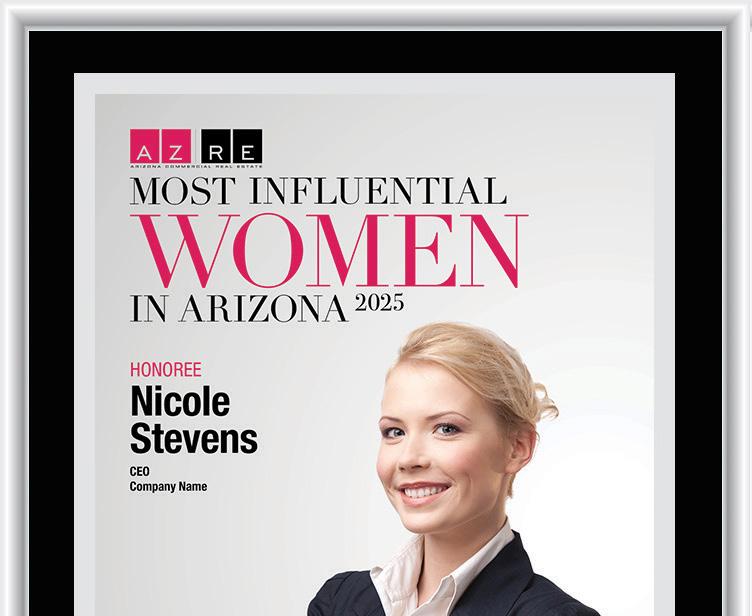
































CAP’s new facility tells the story of Arizona’s most precious resource

By KYLE BACKER ISAAC CHAVEZ
On May 1, Central Arizona Project (CAP) and its construction partner Mortenson broke ground on the 32,000-square-foot Water Education Center located near CAP’s headquarters in North Phoenix. Through interactive exhibits and educational programming, the community will have an opportunity to learn how CAP supplies Colorado River water to more than 6 million Arizonans. The facility — expected to be completed in Fall 2026 — will also feature collaborative space for water policy discussions and host Central Arizona Water Conservation District’s (CAWCD) board meetings.
“Ultimately, CAP is federal infrastructure, meaning that it’s difficult to bring in the public to show them our operations because of security,” explains Brenda Burman, general manager at CAP, during the groundbreaking. “[The Water Education
Center] will allow us to tell our story with a hands-on experience for kids, adults and everyone in between.”
Even though canals crisscross the Valley, many residents are unaware of what those waterways represent — an engineering marvel. Terry Goddard, CAWCD board president, explains during the groundbreaking that CAP’s 336-mile system is a “miracle” that moves water uphill nearly 3,000 feet in elevation, and was only made possible thanks to a hard-fought political battle.
“Securing the necessary heft in Washington to get [the Colorado River Basin Project Act of 1968] passed over incredible opposition, then building it and now managing it is an amazing accomplishment,” he continues. “With the groundbreaking of the Water Education Center, CAP starts a new chapter during a pivotal moment in Arizona’s water story. It’s a time of anxiety about where our future water
supplies will come from ... so we need to make sure [Arizonans] know that as the insecurity mounts, they can deal with it and help protect this miracle.”
With a project like the Water Education Center, creating a lasting impression on visitors is a top priority. One way the facility will create a memorable experience is by having it straddle the canal — something Andy Aguero, senior superintendent at Mortenson, says intoduces unique construction challenges.
“It’s a tight area, so we have to be precise and make sure we don’t cause any damage to the lining,” he continues. “We’ll use a crane to set the structural steel on the north side of the canal, then work our way to the south side with the bridge components and the grating that goes over it.”





“ We need to make sure [Arizonans] know that as the insecurity mounts, they can deal with it and help protect this miracle.
”
Because of the load limits on the grating across the bridge, Aguero notes that scaffolding will be used instead of scissor lifts to install the structural steel supporting the roof.
The emphasis on education means that the exhibits will be key features of the project. Due to their size, Aguero says that meticulous planning is required so everything comes together as intended.
“A section of walls will be left out so we can set down these large, heavy exhibits with a crane,” he continues. “That will happen before the roof goes on because there’s no other way to get them in the building.”
From a design perspective, Brian Farling, principal at Jones Studio, explains that the bridge was concieved as a connection point to the water below.
“We did that by putting all the heavy duty structure up in the roof, and then delicately hanging the bridge from it using stainless steel rods,” he continues.
“The walking surface is vertical steel bars on tight centers, so you’ll be able to feel the air and moisture come up through the floor without it seeming precarious.”
An architectural motif present throughout the project are references to the 21-foot-diameter canal siphons that move water throughout the CAP system.
“At the entrance, we have a shaded amphitheater we call the student siphon,” Farling explains. “When groups arrive, it’s a spot where they can listen to stories about what they will see inside.”
That siphon extends into the lobby of the Water Education Center, where guests can learn the basics of CAP operations while standing in just the top half of the pipe — giving context for the scale of the system — before terminating at the executive conference room.
The roof itself has an important role in communicating how to respect scarce natural resources. Rather than treat rainwater as a nuisance, the roof funnels
it into a cistern called the tribal ring in honor of the native peoples who first learned to live in Arizona’s desert.
“It seemed like a natural place to celebrate the tribal ancestors and the lessons they taught us about building in this harsh climate,” Farling explains.
After the water is collected, it is released back into nature, giving the tribes a “metaphorical role in nourishing the landscape,” according to Todd Briggs, principal at TRUEFORM Landscape Architecture Studio.
The plant pallete, he continues, is reflective of the diversity of ecosystems found in Central and Southern Arizona.
“Whether it’s canyon, riparian, wetland — all the biomes found in the Sonoran Desert will be represented,” Briggs says. “There are layers of real educational moments within the landscape. It’s a well-choreographed progression in terms of what you learn and experience as you arrive.”

As we near the end of the 2025 Legislative Session, many important policy issues impacting the development community have been debated and considered and fewer have been passed and signed into law. At Valley Partnership, we advocate for responsible development policies at the local, state, and federal levels. As an industry, certainty and long-term planning are critical for successful community development. Key areas of importance include thoughtful water planning, preserving economic development tools and modifying regulations to increase the state’s housing supply.
Arizona has long been a leader in innovative, smart and sustainable water policies. But many recognize the policies that helped create our vibrant metropolitan region need to the be restructured for a drier future.

Water policy is complex as it impacts many entities and stakeholders across the state. There were important conversations at Arizona Legislature this session about groundwater, active management areas and converting agricultural land for urban development. Specifically, Senate Bill 1611 would allow a person who owns
land in an active management area with an irrigation grandfathered right (IGFR), to permanently relinquish all or a portion of the IGFR in exchange for a physical availability exemption credit. After years of negotiations, an agreement was reached.
As the constraints on power generation continues to impact growth both regionally and nationally, we have continued to work with our utility partners to support policies to allow them to increase their ability to generate power and the stability of the grid. Two of these pieces of legislation were signed into law: House Bill 2679 allows utilities to securitize additional costs related to operations and House Bill 2201 defines wildfire mitigation efforts required to be taken by the utilities to avoid liability for future wildfires.

Economic development tools have played a critical role in creating the thriving economy we have today. Compared to our competitor states, Arizona has few economic development tools to attract investment in areas desperately needing new development. Once again, GPLET (Government Property lease Excise Tax) has been under attack, an economic development strategy deployed by local jurisdictions to develop or redevelop areas. This year’s bill, Senate Bill 1050, would have reduced the amount of the tax abatement essentially rendering the tool unusable. Luckily, Gov. Hobbs vetoed the bill.
The state has not been able to keep up with the increased demand in housing as people from across the nation choose to relocate to Arizona.
Affordable and attainable housing continues to be a challenge and requires multiple solutions, regulatory changes, and programs to help jumpstart homebuilding to meet this demand. Gov. Hobbs has signed a bill into law that will require municipalities with populations of 150,000 or more to allow for a minimum of 10% existing commercial parcels to be eligible for adaptive reuse and multifamily residential development. It is estimated that over 150,000 units could be built in the 10 cities impacted by these changes.
There have been a pair of bills signed into law that should help to streamline interactions between the development and local governments.
House Bill 2447 requires municipalities to authorize administrative personnel to perform specified duties: • to review and approve site and
development plans, land divisions, lot line adjustments and ties, and preliminary and final plats without a public hearing
• to review and approve design review plans based on objective standards without a public hearing
• allow at-risk submittals for certain on-site preliminary grading and drainage work on infrastructure
• allow applicants with a history of compliance with building codes and regulations to be eligible for expedited permit review
Senate Bill 1286 allows a county employee authorized by an adopted county ordinance to carry out specified duties relating to the subdivision of land, approval of different plats and parcels of land and approval of subdivided lands with water restrictions.
Additionally, Senate Bill 1229 would prohibit a city from regulating home designs and development standards for single family homes with the intention of building smaller and more affordable homes. The “Arizona Starter Homes Act” has received much attention and vigorous debate as previous versions have failed to pass the Arizona Legislature or been vetoed by the Governor. The bill is still awaiting consideration.
Although final action has been taken on many bills, there are still on-going negotiations regarding the FY2026 budget, and the renewal of Proposition 123, which provides $300 million annually from the State Land Trust to K-12 education and expires this summer.
Recently, lawmakers, stakeholders and the Governor reached an agreement on creating a mechanism to fund facility improvements at Chase Field.
As this session ends, we urge lawmakers to work with fellow colleagues and stakeholders in the interim and moving forward on economic development policies and infrastructure planning that will set Arizona up for success over the next few decades.
Clark Princell, President and CEO of Valley Partnership
By KYLE BACKER
On March 12, George & Gather opened its doors in Downtown Chandler, offering scratch-made, seed oil-free food in a redeveloped 7,700-squarefoot space. Founded by Chandler locals and first-time restaurateurs Amber and Mike Kovarik, George & Gather serves breakfast, lunch and dinner, along with grab-and-go meals and Arizona-sourced products in its market.
Even though the husband-wife duo are both heavily involved in the business, Amber Kovarik explains that opening a restaurant has been her dream since childhood.
“It’s something that’s been on my heart for as long as I can remember,” she continues. “My dad and I would go to restaurants with a notebook and write down what we loved or what we’d do differently. I always knew that I was going to open a restaurant someday, it was just a matter of when.”

AZRE magazine sat down with Amber Kovarik to learn more about how the couple decided on the building that became George & Gather and how she’s used her experience in the mortgage industry to launch her restaurant career.
The following responses have been edited for clarity and length.
AZRE: What attracted you to this particular structure?
AK: My husband always wanted to own commercial property in Downtown Chandler, and he purchased the building at the end of 2020. He said we should open a restaurant there, but the mortgage industry was so busy I couldn’t even see straight.
A few years later — on our 16th wedding anniversary — he brought up the idea again. Work was the most grueling and grindy it had ever been throughout my 20-year mortgage career, and I wasn’t happy. That time, I said yes. Before we bought it, the building was a dilapidated auto body shop painted Pepto-Bismal pink and wrapped in barbed wire, so it was quite the project. But we worked with an incredible
designer at House of Form who helped turn our vision into reality. That said, we didn’t see the space and think, “This is it!” — everything just fell into place.
AZRE: Has your experience in the mortgage industry helped you as a restauranteur?
AK: I love taking care of people, and that’s what a restaurant is all about. But I was also doing that every time I worked with a client on purchasing a home. Spending two decades learning what people want and need helps me a lot in running the restaurant.
I also had a team in the mortgage business for the last 13 years, and I learned the hard way about how to be an effective leader. We have 102 employees at George & Gather, so I’m glad I developed my leadership skills before opening the restaurant.
AZRE: Have you felt any trepidation as your long-time dream became reality?
AK: You hear all the time about the high failure rate of restaurants, which was scary going into this. That said, I fully believe in the concept of George & Gather but also know it’s important to pay attention to the numbers and run it like a business. There’s a lot to manage, but I love learning all I can about being a restaurant owner and have surrounded myself with incredible people.
AZRE: Anything else you’d like to leave readers with?
AK: My sister passed away about seven years ago, and that was a catalyst for me to take a chance on what could be a risky endeavor no matter what happens. Life is short, and I don’t want to have any regrets. I hope other people keep chasing their big dream too.
By KYLE BACKER
For Cathy Teeter, managing director at CBRE, finding her way into commercial real estate began with a chance encounter while waiting for a job interview.
“As I was sitting in the lobby, a broker from Del Webb Corporation sat down next to me,” Teeter recalls.
“When I told him I was there for an interview at a law firm, he said, ‘Working in commercial real estate is way more fun. Lawyers are boring.’ Then he took me up to interview at Dell Webb Corporation, and I walked out with a job.”
Now firmly established as a prominent leader in the state’s commercial real estate industry, Teeter is still having fun. AZRE spoke with Teeter to learn more about how she experiences Arizona much like a tourist would.
Segments of this conversation were taken from Teeter’s appearance on the AZ Big Podcast with Michael and Amy. Responses have been edited for clarity and length.
AZRE: What gave you the idea of seeing Arizona through the eyes of a tourist?
Cathy Teeter: It started as a spur of the moment thing. On our first anniversary, my husband and I had been swamped at work and didn’t make any plans, so we decided to just jump in the car and drive to Patagonia. We’re big hikers, so we went exploring, and that started the tradition. Now we try to play tourist a couple of times each year.
AZRE: Are most of the trips focused on exploring the outdoors?
CT: We always include something physical. During the pandemic, we’d take our bikes somewhere in the state nearly every weekend. We also enjoy wine, so last year we paddled down the Verde River and visited some wineries in Cottonwood afterwards, which was so fun.
AZRE: What are some hikes you’ve gone on and enjoyed?
CT: We’ve done the rim-to-rim hike in the Grand Canyon and stayed at the Cottonwood Campground, which was a great experience. Madera Canyon is breathtaking — though it rained on us a few summers ago while we were there, and I was freezing cold. Ramsey Canyon is another amazing hike — I didn’t know this, but it’s one of the top birdwatching spots in the U.S.
AZRE: Do you always leave the Valley to go on these excursions?
CT: Actually, the last place we stayed was at the Cozy Peach at Schnepf Farms. They have these really cool vintage Airstreams with a bathroom, a kitchenette and space to build a fire out front. After that, we went to the Queen Creek Olive Mill, then explored Mesa’s Asian district. The food is incredible there.
Beyond that, every Sunday we ride our bikes down the canal to Tempe Town Lake for a picnic, or we’ll get breakfast at the Desert Botanical Gardens. We’ve also visited the Grand Avenue arts district and the Roosevelt Row area — there are so many local touristy things you can do.
AZRE: I have to ask you a tough question before we wrap up. How do you expect the state’s commercial real estate industry to fare over the next few years?
CT: You certainly saved the hard one for last. Arizona should do well, especially in relation to the rest of the country. We continue to see growth, especially with industrial, but of course everyone is watching the tariffs. Some deals are on pause because people don’t know what will end up happening. Overall, I think 2025 will be a lot like last year, which was strong. The fourth quarter of 2024 was CBRE’s
strongest in the company’s history. That was shocking to me — we all hear about the scary stuff happening even though things are going well in our industry. But the economy in Arizona, and especially Greater Phoenix, should remain strong.

By MICHAEL GOSSIE
Becoming a leader in Arizona’s male-dominated commercial real estate industry takes resilience, strategic vision and relentless drive. Women must navigate challenges with confidence, build strong networks and deliver — sometimes over-deliver — consistent results. Leadership demands not just expertise, but the courage to speak up, mentor others and reshape the industry to be more inclusive, equitable and future-focused. The women who make up AZRE magazine’s list of the Most Influential Women in Commercial Real Estate for 2025 personify those qualities.
“Never underestimate the power of relationships — they are the foundation of everything,” says Ashley Nye, associate project executive at Clayco and one of the Most Influential Women in Commercial Real Estate for 2025. “I’m here today because of a community of people who believed in me, lifted me up, and stood beside me — and because I made it a priority to do the same for them. The truth is, some of the biggest opportunities in your career will come not just from
what you know, but from who knows your worth. When those moments come, step into them with confidence, deliver with integrity, and let your work speak for itself. Success isn’t a solo journey — it’s built together.”
This prestigious, once-in-a-lifetime honor celebrates women who have not only achieved professional excellence, but have also made meaningful differences in their communities. Their stories inspire others and shape Arizona’s future. The 2025 honorees will be celebrated at a special awards dinner on August 21, 2025, at Chateau Luxe in Phoenix.
With that in mind, what advice does the Class of 2025 have for those women aspiring to be one of the Most Influential Women in Commercial Real Estate in future years?
“You may walk into a room where you’re one of the few women — or the youngest person there,” says Stacey Noble, director of business development for Keeley Construction. “Speak up, ask questions, and share your ideas. Don’t wait to feel ready — start doing. Confidence earns respect.”
Most Influential Women in Commercial Real Estate: Class of 2025
Melissa Carrasco // Bell Bank
Jenn Consentino // Corgan
Kelly Gantner // Diversified Partners
Jill Hamblen // triARC architecture & design
Christina Heide // Southwest Heritage Bank
Nicole Herman // Social Design Studio
Kate Kaminski // Howard Hughes
Kim Murphy // CHASSE Building Team
Stacey Noble // Keeley Construction
Ashley Nye // Clayco
Joy E. Seitz // American Solar & Roofing
Jenn Thomas // Colliers
Jenny Aust Turner // Cresa
Vanessa Williams // CBRE



VICE PRESIDENT — COMMERCIAL REAL ESTATE BANKER // BELL BANK
Background: An Arizona native with more than 28 years of banking experience, Carrasco blends her deep industry knowledge with her passion for making a difference and helping others. In her role as vice president of commercial real estate, she specializes in structuring creative financing solutions and takes pride in building meaningful relationships that help her clients succeed.
Source of pride: “Just over a year into my role at Bell Bank, our market president, Kyle Kennedy, created the Culture Award in my honor — and I was the first recipient. It meant more than any top producer award that I have ever received because it recognized the values I try to live daily: Integrity, teamwork and heart. Knowing it continues each year makes it even more meaningful.”
Surprising fact: “When I’m not busy lending millions, I’m covered in sawdust from my latest DIY project — or flour from baking custom layered cakes. Who knew finance, power tools and buttercream could go hand in hand?”
LEARN MORE: BELL.BANK

Background: As a commercial real estate loan officer, Heide brings extensive industry knowledge and a hands-on approach providing optimal finance options. She is committed to the community being actively involved in various local organizations and initiatives. Her advocacy for women in the commercial real estate arena has inspired others to break barriers and pursue leadership roles.
Source of pride: “Years ago I made the $100 million Loan Club, which is recognized across the financial industry as a mark of excellence. Receiving it places me among a select group of top performers, giving me credibility and respect within my field ensuring that my clients and my company achieve their financial objectives.”
Professional advice: “Be kind. Be confident. Be graceful. Always do the extra work to be prepared. When you’re called to the table, own it and embrace that you earned it with your proficient skillset, knowledge and perspective.”
Surprising fact: “I continued my collegiate studies in theatre/ performing arts in New York City at The American Art Theatre and HB Studios. I am still an active member in the Screen Actors Guild and American Federation of Television & Radio Artists.”
LEARN MORE: SWHBANK.COM






PARTNER AND CFO // DIVERSIFIED PARTNERS
Background: Gantner is CFO and a Partner at Diversified Partners, with over 30 years in commercial real estate. She leads corporate operations, accounting, property management, and has overseen $500M+ in development across 54 companies. Gantner’s expertise spans development, management, leasing, construction, and acquisitions, driving projects from concept to completion.
Source of pride: “Rebuilding Diversified Partners after the 2008 real estate downturn to who and where we are today is what I’m most proud of. As the last hire before the crash, I was tasked with leading the turnaround. By restructuring operations and returning to the “basics,” we stabilized, improved efficiency and profitability, and created a foundation for sustained growth— while many others were forced to close. I’m proud of Walt for trusting my vision. Our team is amazing!”
Professional advice: “Be yourself. Listen, learn, and ask questions. Challenge yourself—not others—and don’t try to be like anyone else. You can accomplish anything you set your mind to; there are no limits to what you can achieve to be successful.”
Surprising fact: “Most people are surprised to learn I’ve run a screenprinting and embroidery business since 1998—and still do! I’ve also played on a women’s travel hockey team for the past 20 years, and in a men’s league with my husband as my defensive partner.”
LEARN MORE: DPCRE.COM


AND PRINCIPAL DESIGNER // SOCIAL DESIGN STUDIO
Background: Herman is a leader in boutique hospitality design. Known for transforming concepts into unforgettable experiences, she creates restaurants, hotels, and spas that leave lasting impressions — blending creativity, strategy and a deep understanding of how people connect with spaces.
Source of pride: “Bringing unique restaurant concepts to life gives me the most incredible pride. Seeing a client’s vision fully realized and knowing our team helped create spaces where people connect, celebrate,and make memories is the most rewarding part of my career.”
Surprising fact: “I can’t walk into a restaurant without mentally redesigning it — even if I’m just there for tacos.”
AND OWNER // TRIARC ARCHITECTURE & DESIGN
Background: As founder and owner of triARC architecture & design, Hamblen leads with vision and heart. She drives strategy, ensures financial health, mentors her team and builds meaningful community connections. Her hands-on, people-first approach has shaped triARC into a respected, values-driven presence in Arizona’s design community.
Source of pride: “I’m proud of cultivating a collaborative environment where innovative ideas grow, gritty problem-solving thrives, and clients’ visions come to life. It’s all about trust, teamwork, and creating spaces that inspire, while bringing energy and joy to our collaborators and clients along the way.”
Surprising fact: “I’m a big fan of biking, hiking and rock climbing.”

STUDIO LEADER AND OFFICE DIRECTOR // CORGAN
Background: Consentino is a studio leader and office director at Corgan with over 20 years of experience in commercial interiors. Known for her people-first leadership and passion for human-centric design, she is committed to shaping innovative, high-performance spaces that inspire and building a culture rooted in creativity, mentorship and excellence.
Source of pride: “Being promoted to office director fills me with pride. It reflects years of hard work and allows me to shape a culture that champions innovation, collaboration and growth. I now have the opportunity to empower others and foster an environment where every voice can thrive and contribute meaningfully.”


BUSINESS DEVELOPMENT LEADER // CHASSE BUILDING TEAM
Background: Murphy is a business development leader/ownerteammate at CHASSE Building Team as well as Southwest Chapter of Job Ordering Contracting Excellence president, Arizona American Public Works programs chair, a member of the Arizona Parks and Recreation vendor committee and Town of Queen Creek education committee. She is also a member of the Arizona Airport Association, Arizona Association of School Business Officials and more.
Source of pride: “I am unbelievably proud at helping grow the municipality and Job Order Contracting (JOC) sectors within CHASSE Building Team. Over the years, I’ve played a hands-on role in building lasting relationships with city clients, earning their trust and delivering high-quality projects that meet public needs.”
Professional advice: “Show up early, stay sharp and finish strong. Reliability and hustle go a long way.”
Surprising fact: “I am a proud mother of two children — 29 and 24 years old. One is a survivor and the other is in the Army, currently stationed in Germany. They keep me striving to be a better person every day.”
LEARN MORE: CHASSE.US



CHIEF OPERATING OFFICER // HOWARD HUGHES, ARIZONA REGION
Background: Kaminski is the COO for the Arizona Region at Howard Hughes, where she is leading the development of Teravalis — a 37,000-acre master-planned community in the Phoenix West Valley set to debut in 2025. A seasoned real estate and investment executive, Kaminski brings deep strategic expertise and a proven track record with leading asset management firms and homebuilders. Prior to joining Howard Hughes, she served as global COO at Walton Global Holdings, overseeing operations across a global portfolio of companies and land-based real estate assets.
Source of pride: “Leading one of the largest corporate reorganizations of a real estate asset management company is one of my proudest professional accomplishments. That experience pushed me far beyond my comfort zone and taught me more about business, leadership and human dynamics than any textbook ever could. It demanded bold decisions, creative thinking under pressure and a steady hand through uncertainty. My biggest takeaway — though it may sound cliché — is that great leaders are defined not in easy moments, but in how they show up during the hardest ones. True character reveals itself under pressure.”
Professional advice: “Develop financial savvy early — it’s one of the most powerful tools you can bring to the table. Understanding how value is created and how your work impacts the bottom-line sets you apart and earns respect in the rooms where decisions are made. Pair that knowledge with clear, confident communication and a strong sense of ownership. And always remember: your perspective is not just valid — it’s valuable.”
Surprising fact: “When I was 11, my mom and I rode our bikes across the state of Iowa in the Register’s Annual Great Bicycle Ride Across Iowa (RAGBRAI). We camped and rode from the Missouri River to the Mississippi River in a week. It was grueling … and anyone who thinks Iowa is flat is wrong!”
LEARN MORE: HOWARDHUGHES.COM


ARIZONA MARKET LEADER AND SENIOR MANAGING DIRECTOR // CBRE
Background: With over 18 years in commercial real estate, Williams drives strategic growth, leads high-performing teams and delivers innovative client solutions. Williams previously held leadership roles at Colliers and Cushman & Wakefield, excelling in business development and marketing.
Professional advice: “For those just starting in the industry, I suggest being a sponge. Absorb knowledge and insights from every experience and interaction. It is important to surround yourself with excellence. Seek out individuals who uphold integrity and make the right choices, even when no one is watching. Embrace every opportunity to learn and grow and align yourself with mentors and colleagues who exemplify the highest standards of integrity and excellence.”
CEO // AMERICAN SOLAR & ROOFING
Background: Seitz is a visionary leader shaping the future of energy through innovation, culture and cross-industry insight. With venture capital experience and a passion for craftspeople, she champions ethical partnerships, executive growth and hands-on leadership, all while exploring how AI, media and climate change intersect with renewable energy’s next frontier.
Source of pride: “I advocate fiercely for customer-owned solar, traveling to D.C. to protect the 25D tax credit and ensure everyday Americans, not corporations, benefit from clean energy. At home, I invest in executive coaching, align vendors with our values and honor the craftspeople who build America. I love everyday humans do everyday things.”

SENIOR VICE PRESIDENT // CRESA
Background: Turner provides invaluable guidance and direction to companies seeking integrated and comprehensive real estate solutions from strategy to implementation. Within Cresa, Turner is the co-chair of the Women of Cresa employee resource group.
Professional advice: “My mom used to tell me once she decided to be a mom and have a career, she was determined to be excellent at it. She didn’t want to be away from her kids only to be mediocre, so she might as well kick ass. That advice inspires me as a working mom and I think it can apply to anyone deciding how they want to approach their career, whether they are a working parent or not.”


Background: Noble is a dynamic leader in commercial construction with 25 years’ experience in real estate and business development. Based in Phoenix, she helped launch a new regional construction expansion focused on commercial projects. Known for her strategic vision and relationship-driven approach, Noble is passionate about partnerships that bring impactful projects to life.
Source of pride: “Professionally, I’m most proud of playing a key leadership role in launching Keeley Construction’s Southwest expansion. From building a team and establishing brand recognition to securing projects and executing them at high level, our efforts not only met but exceeded our first-year goals. Achieving this level of success in such a short timeframe has been incredibly rewarding. I couldn’t be prouder of what we’ve been able to accomplish as a team!”
Surprising fact: “At the peak of my modeling career (some might have called it ‘receptionist’), my face was featured in Nationwide Vision Centers’ weekly mailbox mailer ad. Nothing says ‘iconic’ like convincing thousands to get their eyes checked and buying 2-for-1 frames.”
LEARN MORE: KEELEYCONSTRUCTION.COM
Share your ideas, talents and experience with the world.
At Colliers, your career is as limitless as your ambition. We are a diverse global network of more than 23,000 enterprising professionals who think big and work collaboratively to provide expert real estate and investment advice to our clients. Let’s chat about how your vision can shape our collective future.
colliers.com/arizona Accelerating success.



ASSOCIATE PROJECT EXECUTIVE // CLAYCO
Background: Nye is a commercial real estate and development professional with 15 years of experience. She currently serves as associate project executive in the residential unit at Clayco in Phoenix, where she bridges development and construction to ensure the successful execution of large-scale residential projects. Source of pride: “The last project that I worked on in my career as a landscape architect was the Hospice of the Valley Dementia Care campus. It was more than a design project — it was an opportunity to create a space that brought comfort, dignity, and calm to individuals and families during some of the most vulnerable moments of their lives. Every development we touch has the potential to impact people, but this one was especially meaningful. Knowing that thoughtful design could directly support healing, ease anxiety and create moments of peace — that’s a privilege I don’t take lightly. That project reminded me of the real power of place.”
LEARN MORE: CLAYCORP.COM




















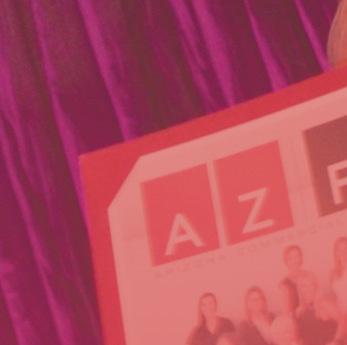













PRESIDENT
Background: Thomas is a senior vice president at Colliers Arizona, specializing in occupier services. With over 20 years of experience, she leads national and global accounts, aligning clients’ business initiatives with their real estate strategies. Thomas excels in delivering tailored solutions that drive savings, efficiency and long-term success.
Source of pride: “I love seeing deals come to life when my clients are happily in their new spaces. It’s rewarding to drive through towns across the country and spot the spaces I’ve helped create.”
Professional advice: “Don’t let being a woman hold you back in this male-dominated industry. Be prepared to put in long hours, but know that if you choose a direction for your career and stay focused, you can succeed. Be confident, work hard, watch what others do, ask questions and utilize all of the training tools that your company offers.”
Surprising fact: “I grew up competitively riding horses in hunter jumpers. After surviving cancer, I promised myself I’d get back into it, which I have. It’s my greatest joy — besides my family and my 1-year-old baby, who I can’t wait to share the horses with someday.”
LEARN MORE: COLLIERS.COM/EN


To do more than build. To create. To innovate. And to do it with a holistic, intelligent balance of art and science that’s unmatched anywhere.
We see our work through the eyes of the people who will use them every day. Through their eyes, we see places of entertainment, education, innovation, technology, healing and research.
The result? Powerful structures with impacts that reach far beyond these walls.

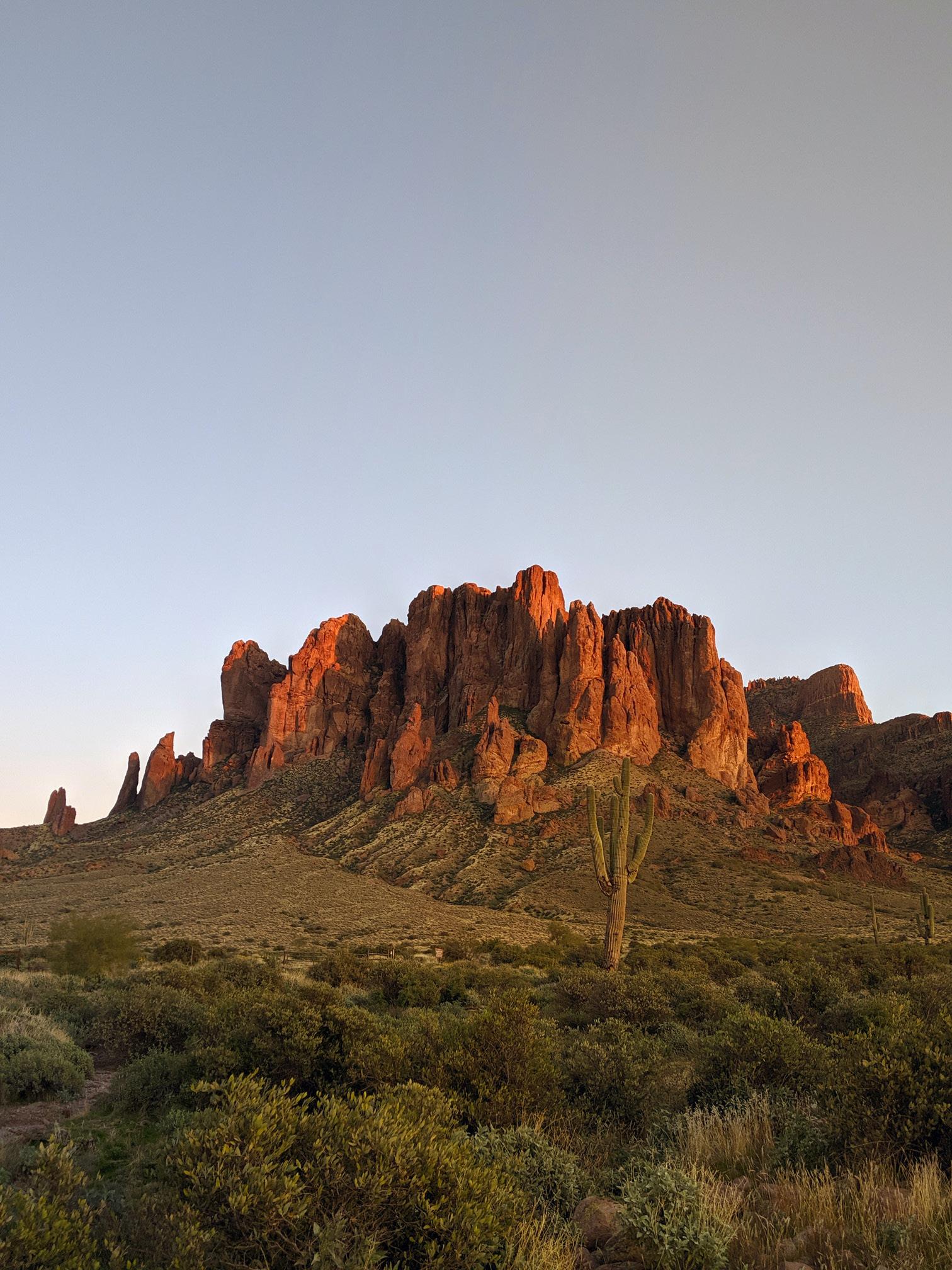





By KYLE BACKER
Whether it’s the architect’s drafting program or a craftworker’s hammer, tools are critical to the completion of any project. As technology advances, the industry now has more opportunities than ever to rethink how to approach construction challenges, optimize operations and enhance worker safety.
Paola Sanguinetti, director of The Design School at Arizona State University’s Herberger Institute for Design and the Arts, notes that implementing more automation has been a growing trend in the sector.
“The construction industry is fragmented because of the variety of companies and trades. It’s a very complex space, but we’re looking at manufacturing and technology to help bring more efficiency to the process,” she continues.

One of these methods with the potential to revolutionize how buildings are erected is 3D printing. This technology has been around for some time, with entry-level, consumergrade printers widely available for a few hundred dollars. Those products typically dispense melted plastic filament according to a plan set, creating an object from the ground up.
When applied to construction, software breaks down the digital model
of a structure to align with the printer’s workflow. A robotic arm then extrudes the chosen building component layer by layer. Sanguinetti notes concrete is a common medium, but using it comes with challenges.
“There is research out of [ETH Zurich, a university in Switzerland] looking at using a bed of dry material instead, so what you’re actually printing is the heat or fusing material to bind it together,” she explains. “It’s a much cleaner and
precise way of doing 3D printing.”
In 2021, Habitat for Humanity used a 3D printer to build more than 70% of a 1,738-square-foot home, including all the internal and external walls.
Sanguinetti visited the site while it was under construction, saying that “it was amazing what they were able to do.”
“[Habitat for Humanity] partnered with [PERI], who had developed the printing process with the climate of Germany in mind,” she continues. “They


were doing it in the summer, and the concrete started to dry [too quickly]. That’s one of the learning curves when 3D printing any wet material. Environmental variables are critical to the fusing, drying and curing processes of concrete.”
Finding the right mix of inputs for the printing process while emphasizing sustainability is one focus on Sanguinetti’s own research. Geopolymer concrete, which replaces Portland cement with fly ash, is an option that shrinks the embodied carbon of the structure. Another way to minimize the total volume of concrete needed is by adding something called phase change materials.
“They allow you to reduce the thickness of walls, because those materials absorb and release heat, giving the walls greater insulating properties. That reduces energy loads for cooling and heating — very useful in an environment like Arizona,” Sanguinetti explains. “But as you add these components, it impacts printability, so we’re trying to find the right ratio.”
In the commercial context, Sanguinetti notes that some companies are exploring how to use 3D printers to prefabricate components off site, much like tilt-up construction. Aspects of a project that require more detailed work, such as facades, are harder to create with the exactitude those elements require.
“3D printing is fundamentally shifting the way we build,” Sanguinetti says. “It improves efficiencies, reduces labor need and enables fabrication to happen more quickly, whether it’s happening on site or off it.”
Reducing risk
Beyond changing how buildings can be constructed, technology is also being used to create additional protections for workers and the wider public. In April, Sunstate Equipment announced it is deploying Netradyne’s Driver•i D-450 platform across the company’s fleet of service and delivery vehicles to bolster driver safety.
The new system provides a 270-degree view via a four-camera array, enhancing visibility. It also incorporates AI elements that give drivers real-time alerts, enabling them to self-correct before a problem occurs.
“If you’re in a big semi, your focus is on traffic and spacing,” explains Mike Safsten, director of safety and risk at Sunstate Equipment. “We’ve had at least three situations where the cameras recognized and prompted the driver of a pedestrian that he or she couldn’t see, preventing a potential incident.”
While the system is not integrated into the mechanical function of the vehicle, it does recognize unsafe conduct on the road. If a Sunstate driver is speeding, they will be given three audible prompts to slow down.
Ignoring those warnings will cause the cameras to start capturing video, which is sent to both the driver and their manager.
From there, the supervisor can call and coach the employee in real-time to manage expectations. But the purpose of the system isn’t to point fingers when people make mistakes — safe driving practices are also recorded to celebrate good habits.
Safsten also stresses that the goal is to reduce the likelihood of accidents, not constantly surveil employees. Even though the cameras are always rolling, he and others only see the video feed when warnings are being ignored or if a collision occurs.
“I see it as a driving partner as opposed to a way to catch people doing something wrong,” he continues. “This technology helps the driver remain focused on the task at hand. Life is hard, and there are more distractions now than ever. These cameras help them see what they cannot and get the load to the customer safely.”
Buy-in from both management and drivers is needed for the successful implementation of a system such as this.
“Just putting it in place isn’t going to do it,” Safsten concludes. “You need a culture that accepts this level of monitoring power in the cab. Without trust, there’s risk of breaking relationships and disrupting operations if you don’t do the groundwork on the human side first.”
DP Electric is raising the standard in construction technology with the integration of the NavVis VLX3, a cutting-edge tool that enhances our capabilities in the field. We are committed to leading industry trends and shaping the future of construction.
DEPENDABLE PEOPLE | DEPENDABLE PERFORMANCE



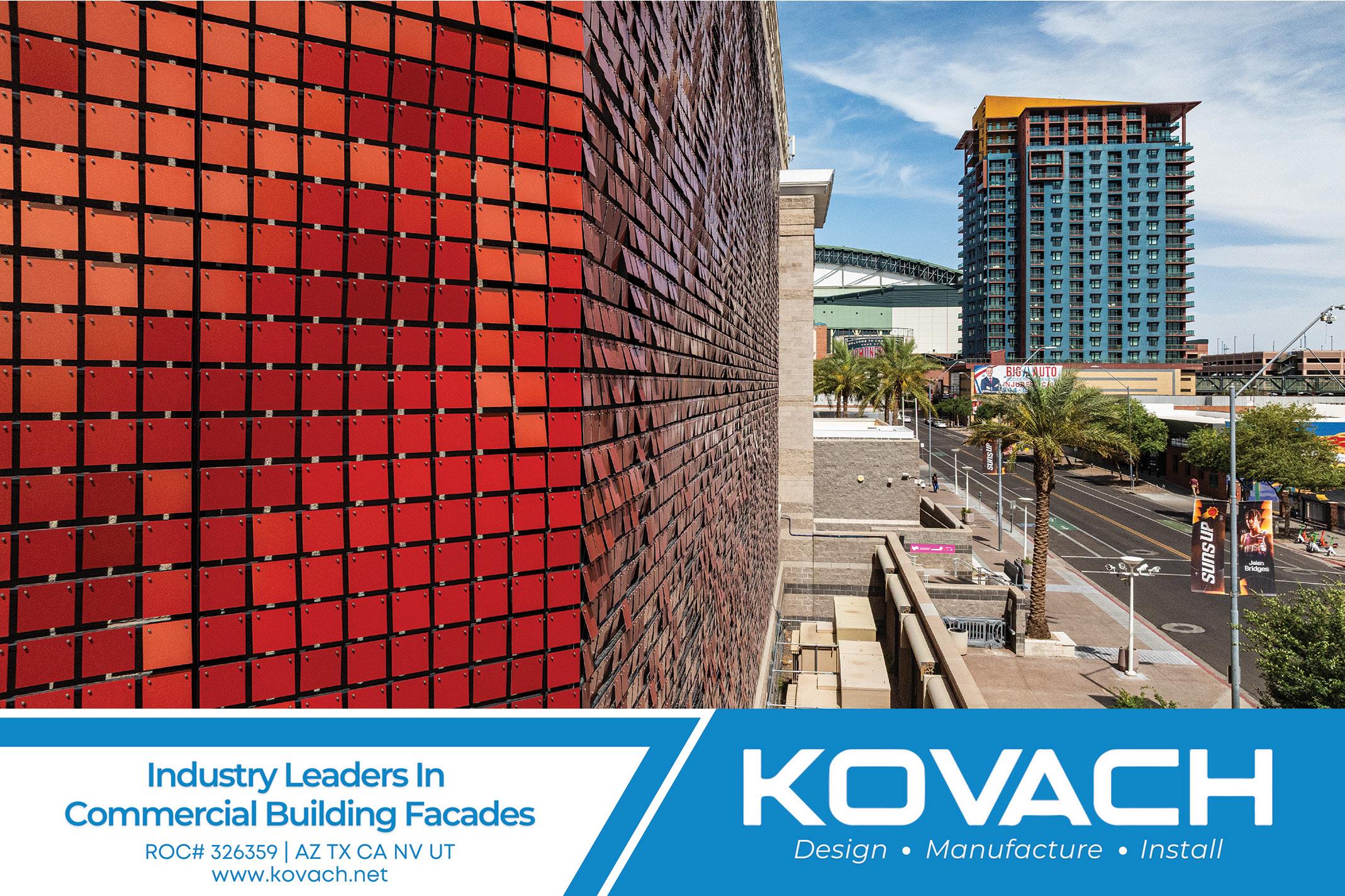




Communities across Pinal County are growing, reshaping the region


Arizona businesses are looking to the future. And we’re here to help. Together, we can bring new jobs and investments to the state. As part of our commitment to drive local economies, the APS Economic Development team has launched SizeUpArizona. This business intelligence tool provides small businesses and entrepreneurs with market research that typically only large corporations can afford. Visit SizeUpArizona.com to help you research costs, revenue, customers, location and market scenarios alongside similar businesses.
To help identify your competitive advantage and grow operations, visit SizeUpArizona.com


MINING TOMORROW’S COPPER WITH LESS WATER

Using cutting-edge tech to recycle water & cut consumption
Transferring 5,400+ acres of water-critical land to federal conservation.
Continuously monitoring groundwater with Tribal members and local Community Working Group

















































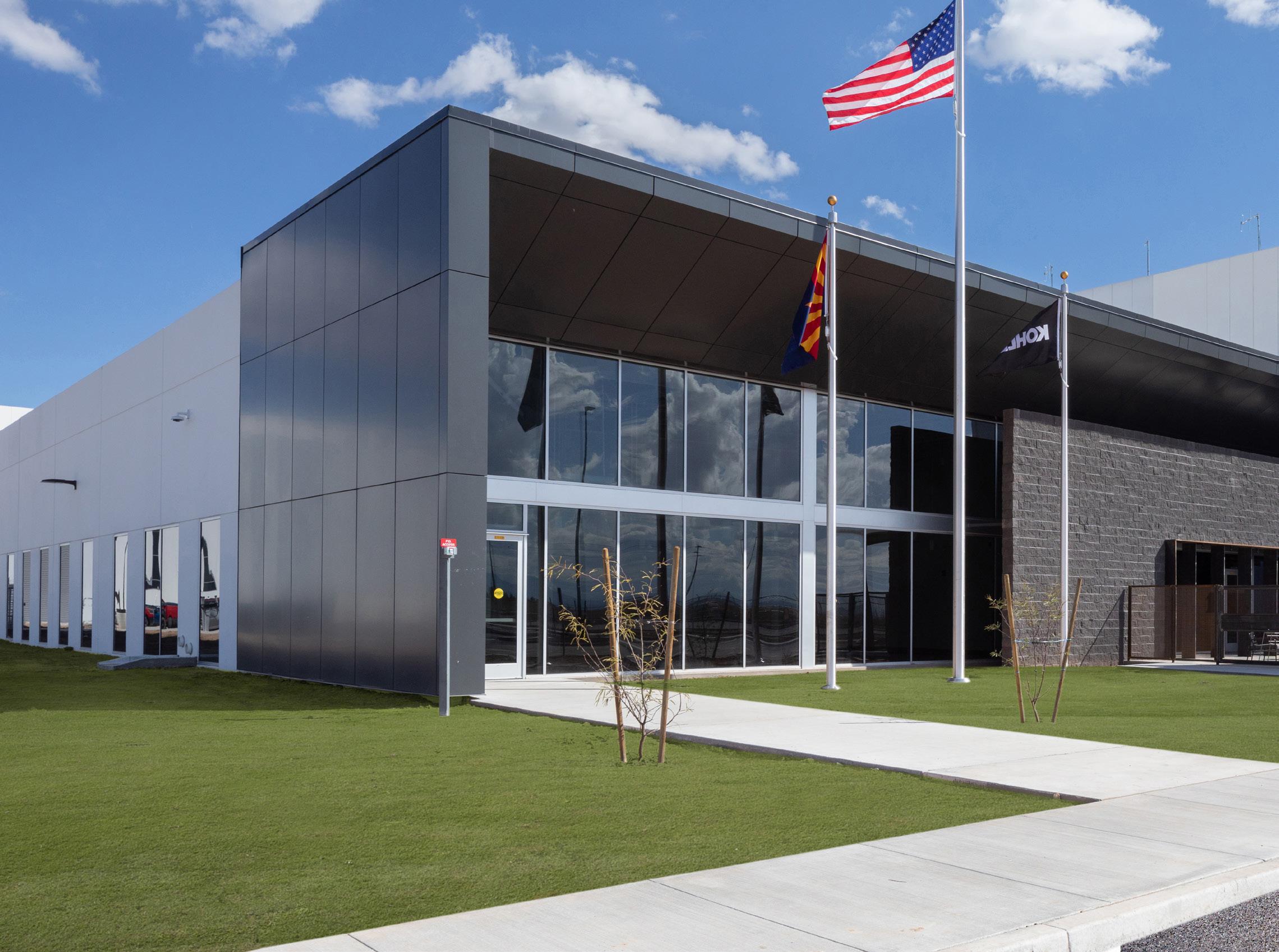





















IBy LUX BUTLER

































































n recent years, Pinal County has established itself as one of Arizona’s most productive regions, welcoming a wave of new residents, businesses and major industrial investments while still honoring the region’s rural heritage. From the bustling corridors of Casa Grande and Queen Creek to the transformative projects reshaping Apache Junction and Superior, each community is shaping its own future.
















































Positioned as the bridge between Phoenix and Tucson, the county has a long history of agriculture, mining and small-town living, but now finds itself as a critical component of Arizona’s economic engine. Proximity to major transportation corridors, including Interstate 10, Interstate 8 and US-60 makes Pinal County well-suited to capture spillover growth from both Phoenix’s East Valley and Tucson’s suburbs. Prosperity does introduce new problems, and local leaders know that sustainable development requires investments in infrastructure, housing, workforce training and community amenities. This balancing act is happening in every corner of the county, and no two communities are approaching it in the same way.





































Strategic approach





















Located along Pinal County’s northern border, Apache Junction is best known as the gateway to the Superstition Mountains. In recent years, however, the city has emerged as the fourth fastest growing city in the Metro Phoenix area.











“There will be continual, steady growth as people watch Apache Junction,” says Bryant Powell, city manager of Apache Junction.























This steady growth is fueled by investments in essential infrastructure, which Powell sees as the backbone of the city’s future.










“We’re so excited to see the quality and the level of investment into our infrastructure that’s helping us grow,” Powell says. “Our water, sewer, roads and broadband in the city is elevating







































































With a goal of starting commercial production by the end of 2026, LG Energy Solution’s first U.S.-based cylindrical battery factory in Queen Creek is expected to create 1,500 jobs. The company has also partnered with the Arizona Commerce Authority, Pinal County and Central Arizona College to establish a new Future48 Workforce Accelerator program. (Photo courtesy of LG Energy Solution.)




















Near the northeastern edge of Pinal County, Superior — a town of around 2,500 residents deeply rooted in its mining heritage — is charting a course toward modern, diversified growth. Like many small Arizona communities, Superior once relied almost exclusively on mining to fuel its economy. Today, mining is still a driving force, but Superior’s also becoming a magnet for new investment and opportunity.




































“Superior has the Resolution Copper project, which, on its own, stands on some pretty strong merits of development for our community,” says Superior Mayor Mila Besich.










“That will allow us to expand our industrial park and finally own our municipal airport.”









Resolution Copper is projected to supply 25% of North America’s copper demand, a critical resource in renewable energy and electric vehicle production. While copper will be a cornerstone of the community, the town is also focusing on strategic land acquisition to build for the future.































“In the next year, we will be purchasing 546 acres of land from the federal government,” Besich explains.















Currently, Superior’s airport is a dirt strip with minimal operations, but the town envisions it as part of a future e-commerce and innovation district that will attract new investment.

















Superior’s ongoing transformation is visible now in its renewed focus on tourism and its emerging role as a home for small businesses and entrepreneurs. With the Boyce Thompson Arboretum drawing around 150,000 visitors a year, Superior’s downtown is increasingly bustling with shops, restaurants and cultural attractions.














































Bordering the southern edge of the East Valley, the City of Maricopa is laying the groundwork for a booming future. While Maricopa’s residential growth has been impressive — boasting some of the most affordable housing in the region — the community is shifting its focus to strategic investments in infrastructure and strong partnerships that support its vision for sustainable development.













This blend of mining investment, strategic land planning, and tourism development is reshaping Superior into a resilient community that honors its legacy while welcoming new economic opportunities. With its unique blend of natural beauty, mineral wealth and small-town charm, Superior is set to become a model for rural communities navigating the challenges of change.































“We’re working very closely with ADOT and other agencies to improve the Highway 347 corridor, which is our main artery connecting Maricopa to the Phoenix metro area,” explains Christian Price, economic growth officer for the City of Maricopa. “When you have more people, you need additional infrastructure.”

























Beyond the highways, Maricopa has invested in expanding roadways and essential services to connect new residents and businesses to the support they need.










A key aspect to Maricopa’s future growth is the city’s dedication to



























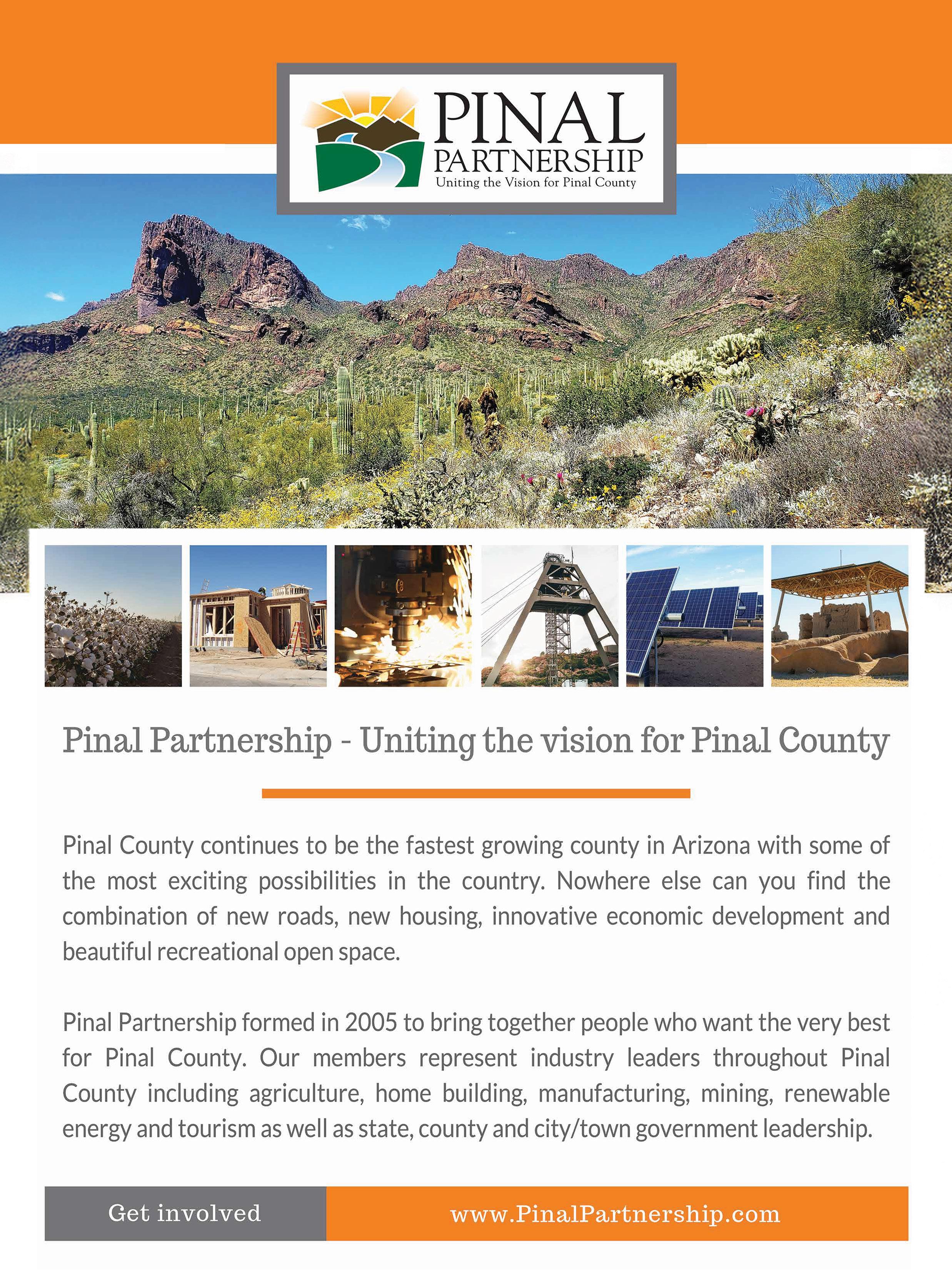

By LUX BUTLER
Thanks to an influx of businesses and residents, Pinal County now plays a larger role than ever in Arizona’s economic story. Its prime location between Greater Phoenix and Tucson is an attractive feature for companies, but the region offers more than employment opportunities. From enjoying the desert’s natural beauty, going on a classic cowboy excursion or experiencing the thrill of skydiving, fun awaits in Pinal County.
“Pinal County is the hidden gem of the greater Phoenix metro area,” says Pinal County Economic Development
Coordinator Michelle Carpenter.
“Last year, we started a new Tourism Advisory Group, which includes all our local chambers of commerce, cities and travel destinations. We meet quarterly to discuss what the county’s strategy is and collaborate on new events.”
On the outskirts of the East Valley, Apache Junction is pushing to get their hidden gems on the map.
“We’re working hard to market our community,” says Bryant Powell, city manager of Apache Junction. “If you drive 10 minutes east of here, you’re at Lost Dutchman State Park, with only
20 minutes more to get to Canyon Lake. We’re trying to flip the narrative and say, ‘Hey, this is the launch-off area for fun!’”
Superior, one of Arizona’s more rural towns, is surrounded by the Ponderosa Pines of Tonto National Forest and home to Boyce Thompson Arboretum, which attracts about 150,000 visitors every year. Superior Mayor Mila Besich accredits the arboretum with the continued economic development growth in her town.
“Over the last 10 years, Superior underwent its own renaissance,” she continues. “In part because of






No two contractors are alike… and you know when one is uniquely different. Our commitment to excellence guarantees delivery of quality, execution and results from concept to completion.
Experience the Difference.
WILLMENG.COM | AZ ROC B-01 082904 | AZ ROC A 323741
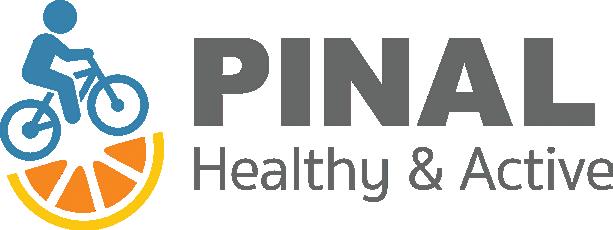
Stay healthy with just one tap.

• Explore more than 60 outdoor recreational opportunities
• Browse over 200 delicious, low-cost recipes
• Search countless free and low-cost events
• Participate in new activities and local community groups
• Find fresh produce at farmers markets
• All in an award-winning FREE app




Home to Dutchman Days Rodeo the last weekend of February annually, Apache Junction Rodeo Grounds keeps the spirit of the classic Arizona cowboy alive. Visitors can catch thrilling events like steer wrestling, barrel racing and bull riding at the rodeo off east Lost Dutchman Blvd.
The Renaissance Festival, open on Saturdays and Sundays from January 31 through March 29, 2026, is a medieval outdoor amusement park. Featuring a 16-stage theatre, a 50-acre circus, an arts and crafts fair, a Jousting Tournament and a feast, it is one of Apache Junction’s largest and most inclusive family-fun activities.


Bringing in country’s hottest hits every year to Canyon Moon Ranch in Florence, Country Thunder music festival has been a cornerstone of Arizona’s music scene since 1996. In 2025, headliners included Riley Green, Keith Urban, and Hardy, and the Arizona festival welcomed its millionth fan.
In Eloy, Skydive Arizona is one of the most popular skydive locations in the U.S. Thrill seekers can feel assured in Skydive Arizona’s professional operation, experienced instructors and scrupulous attention to safety protocols.
Dreaming of a rustic, fair-light-in-ared-barn wedding aesthetic? Or maybe saying “I do” on the water? The Windmill Winery in Florence has both — and wine tasting. Serving locally produced wines, showcasing the best of Arizona viticulture and providing award winning wedding services, The Windmill Winery is a stop worth adding to the agenda.
our public-private partnership with Resolution Copper, but we’ve focused on our outdoor tourism and recreation. We’ve seen many smaller businesses get started here in Superior, and a lot of it is based on being home of the Boyce Thompson Arboretum. It’s a big tourism draw.”
One of the most ambitious developments in Pinal County is Dreamport Villages, a world-class entertainment resort planned for Casa Grande. Envisioned as a blend of theme park thrills and high-tech experiences, Dreamport Villages will feature an indoor water park, extreme sports
facilities, retail spaces and hotels across nearly 1,500 acres.
The project has been rumored to be a “Disneyland in the desert” and highly anticipated by the community since its announcement in 2017. Since then, there has been little noticeable progress, but all hope isn’t lost. Richard Wilkie, Casa Grande’s Economic Development Director, says there's still a chance it will come to fruition.
“We would love to see the project move forward and we stand ready to help the developers as soon as they’re ready,” Wilkie says. “Any community would
like to have this type of project in their community because of the financial benefits. It will attract millions of people a year who will eat, sleep and shop in our community.”
Across the county, leaders are intentionally building cities and towns where Arizonans can live, work and play. Those efforts also make it easier to welcome visitors looking to discover the best of rural Arizona, boosting local economies. A continued focus on the treasures in small towns like Superior will help to establish stronger communities for the future.

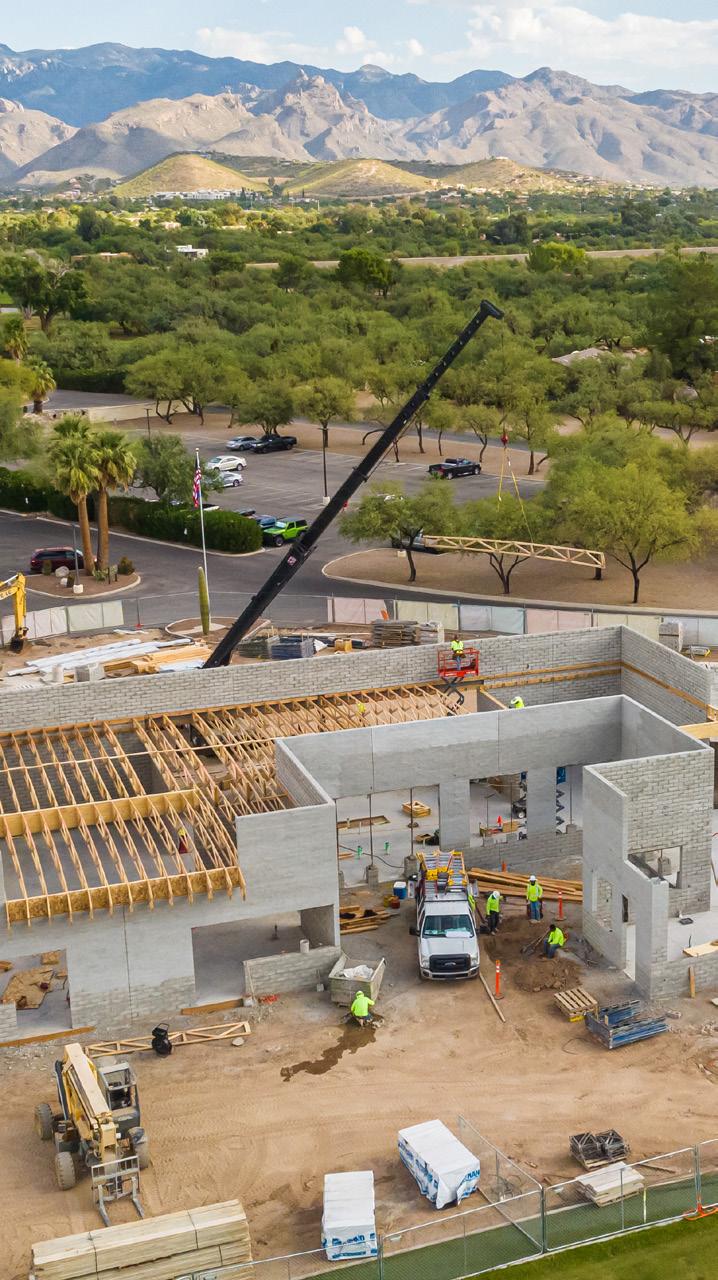







By KYLE BACKER
From its headwaters in the Rocky Mountains until it runs dry in Mexico, the Colorado River has nourished those living in the region for thousands of years. That remains true to this day, with more than 80% of Arizona’s population receiving water from the river’s flow. But as supplies dwindle and a high stakes negotiation looms, the future of the Colorado River is murky.
Arizona, California, Colorado, Nevada, New Mexico, Utah, Wyoming and Mexico all receive an allotment from the Colorado River based on


intricate legal arrangements. Today, the Grand Canyon State is granted 2.8 million acre-feet of water, 60% of which is managed by the Central Arizona Project (CAP). For context, Tempe Town Lake holds approximately 3,000 acre-feet of water.
Due to shortages, CAP’s 336-mile canal system is taking 512,000 acrefeet less water from its share, but the current framework governing how and when those reductions occur is set to expire at the end of next year.
“Thinking about what comes after 2026 is like traveling to a new planet.
There’s no certainty of what may happen,” explains Vineetha Kartha, Colorado River programs manager for CAP. “Right now, there are rules. If we’re in a tier one shortage, I know how much my operations need to be reduced. In 2027, I have no idea what I’d do because nothing is in place yet.”
The U.S. Department of Interior has not yet shared what actions it would take if a new agreement isn’t in place before the deadline, adding to the confusion. But there is no doubt that Colorado River supplies are scarce — measurements of Lake Mead

Central Arizona Project manages a 336-mile canal system that brings Colorado River water to Central and Southern Arizona, accounting for 36% of the state’s water supplies. (Photo courtesy of Central Arizona Project.)

and Lake Powell record them both at approximately 30% capacity.
Kartha notes that describing the current conditions as a drought is inaccurate since it implies a temporary problem. Instead, she explains that the region is experiencing aridification in response to warming temperatures, meaning a hotter and drier climate is expected to persist. Given that the supply outlook is so bleak, an already tricky negotiation between multiple government bodies becomes even more complex.
“If reservoirs were 92% [full] like they were back in 2000, I wouldn’t be
that worried,” Kartha says. “But we are experiencing aridification, so reductions cannot be borne by one state or entity. They have to be shared.”
Even though concerns over the Colorado River grab headlines today, debates over its natural bounty are not new. A century ago, the Colorado River Compact of 1922 divided region into the Upper Basin — consisting of Colorado, New Mexico, Utah and Wyoming — and the Lower Basin, comprised of Arizona, California and Nevada.
Six years later, the Boulder Canyon Project Act of 1928 authorized the construction of Hoover Dam and the creation of Lake Mead. This legislation also apportioned 7.5 million acre-feet of water to the Lower Basin states, with California receiving the largest share.
“Arizona got 2.8 million acre-feet, but could only use about 1 million of that,” explains Rob Anderson, director of natural resources for Fennemore.
“The dream was to move the bulk of that water to Central Arizona. There were concerns that since California was using more than the 4.4 million acre-feet it was given, Arizona would simply lose its allocation.”
The Colorado River Basin Storage Act of 1968 helped realize this dream, establishing CAP and authorizing the construction of the canal system. But getting political backing for the project came at a price.
“To get the California delegation on board, we had to agree to make CAP the junior water user on the river,” Anderson says. “That means that shortages on the Colorado
River falls disproportionately on CAP.”
When water supplies were originally split up between the states, Anderson notes that the measurements were not as precise as they are today. The assumption was made that 16.4 million acre-feet would be reliably available.
“The historic flows of the Colorado River haven’t met that since 1928, and they’ve been declining,” he continues.
As it became clear that shortfalls were imminent, Kartha says new regulations were put into place regarding the operations of Lake Mead and Lake Powell.
“The first four years [of the 2000s] were the driest years we had ever seen, one after the other,” she continues.
“We realized there needed to be actions taken to ensure the health of these two reservoirs.”
The 2007 Interim Guidelines set rules regarding when water users would take cuts. If, for example, Lake Mead falls below 1,075 feet, Kartha says Arizona, Nevada and the Republic of Mexico all take reductions.
“That made some impact, but 2012 was another really dry year,” she continues. “We realized even more needed to be done than was laid out in the in the 2007 Interim Guidelines, so we made an agreement with the two other Lower Basin states called the System Conservation Pilot Program to keep the reservoirs from reaching critical elevation.”
But around 2015, aridification of the region was becoming more evident, leading to the creation of the Drought Contingency Plan. Kartha says working with the federal government and

all seven states was critical to its formation.
“With the Drought Contingency Plan, collaboration within Arizona became even more important,” she continues. “We had partnerships from the tribes on river, who hold some of the highest water rights in the system, as well as the Gila River Indian Community in Central Arizona. They agreed to reduce their demand by 50,000 acre-feet every year for three years to prop up Lake Mead, which helps a lot.”
Even though actions have been taken to blunt the effects of aridification, Kartha says that all who benefit from the Colorado River must be prepared for a future with dwindling supplies. That said, there is reason for hope — she points to Arizona’s long history of successful water policy, such as storing this invaluable resource for a not-so rainy day and building water recycling facilities.
“We’re also working with California to treat water that is currently being released into the ocean and instead deliver it to communities in Southern California, which could free up about 170,000 acre-feet of supplies,” Kartha concludes. “While there is uncertainty about 2027, lots of work has been done over the past two decades to ensure everyone will continue to get water.”


Arizona receives 2.8 million acre-feet of Colorado River water
CAP manages 1.7 million acre-feet of Arizona’s allocation
Currently, CAP is taking a 512,000 acre-foot reduction
54% of CAP’s water is delivered to municipalities, 46% goes to tribal entities
The Colorado River accounts for 36% of Arizona’s total water supply





Here are the projects helping the Phoenix–Tucson corridor evolve into a high-value industrial and innovation engine
By LUX BUTLER
Pinal County is focusing on its future, adding massive industrial campuses, transformative downtown developments and opportunity for residents from across the county. The region is drawing national and international investment in sectors like advanced manufacturing, clean energy, semiconductors and logistics.
From a new walkable district in Queen Creek to a decades-long copper project in Superior, these 10 developments represent the momentum building in one of Arizona’s fastest-growing counties. Here’s a look at Pinal’s top 10 projects driving economic growth, job creation and community transformation across the region.
Residential and mixed-use development
Blossom Rock at Superstition Vistas: Superstition Vistas is a new master planned community in Apache Junction. The community, split in two, Blossom Rock and Radiance, will be made up of approximately 11,000 homes in the next 10 years.
Brookfield Residential and their development partners promise the Blossom Rock community will feature new home designs, neighborhood parks within easy reach of most homes, a community school and miles of trails with mountain views and activities.
The Switchyard: In May 2025, The Switchyard officially broke ground in


DINING DESTINATION: Creation, in partnership with Horizon Real Estate Ltd., broke ground in May on The Switchyard, a $120 million mixed-use project poised to become Queen Creek’s first walkable, design-driven district, uniting sought-after restaurants, retail, offices and future residential. (Rendering provided by Creation)
is surrounded by federal land and the town has long struggled to find space to grow. This acquisition would open room to expand a mile west and a mile south, with future plans centered on affordable housing, business development and airport expansion. The deal is possible thanks to a 2015 federal law allowing specific land sales to the town. Mayor Mila Besich predicts the purchase will be final within the next 12 months.
Advanced manufacturing and industrial LG Energy Solution advanced manufacturing facility: LG Energy Solution is bringing a multi-billion dollar battery manufacturing complex to Queen Creek. Phase one, now under construction, is expected to begin production in 2025 and is the largest single investment of this kind in North America. The facility promises to bring thousands of jobs to the area. While phase two is currently paused, Queen Creek and Pinal County continue to support infrastructure improvements tied to the project.
Logistics and infrastructure
NRS Logios America chemical logistic park: In May, 2025, NRS Logios America officially opened its Chemical Logistic Park, the company’s first logistics hub in the U.S., in Casa Grande. The $90 million facility, located on 40 acres at Ethington and Illinois roads, will support the growing semiconductor and battery sectors with a chemical warehouse, gas pad, ISO container yard and tank maintenance site. Future expansion includes rail infrastructure and cold storage, with 100 jobs expected at full buildout.
Waste Management hauling and transfer station: Waste Management celebrated the grand opening of its new $19 million hauling and transfer station in Casa Grande in May. Located on 21 acres in the city’s west-side industrial area, the state-of-the-art facility will process up to 90,000 tons of waste annually and create 30 new jobs. WM plans to expand the site with compressed natural gas fueling stations and a CNG fleet.
Technology and energy
Queen Creek. The $120 million mixeduse project, developed by Creation and Horizon Real Estate Ltd., will become the town’s first walkable district. It will feature restaurants, retail, offices and future residential across 10 acres. Postino, Shake Shack, and Snooze are among the first tenants announced. Located at Ellsworth and Ocotillo, the project’s first phase is expected to open in mid-2026, bringing Queen Creek one step closer to a community-based downtown. Purchase of Tonto National Forest land — 546-acre expansion to Superior: In an effort years in the making, Superior is preparing to purchase 546 acres of Tonto National Forest land. Due to its location in the Superstition Mountains, Superior
FrameTec manufacturing plant: In June 2024, FrameTec’s plans to build a large manufacturing facility in Casa Grande cleared a big hurdle by receiving Planning & Zoning Commission approval. The $150 million expansion will bring two buildings totaling 254,000 square feet to a 30-acre site at Thornton Road and Ash Avenue. Construction is expected to begin in early fall, with the first building operational by early 2026 and full buildout by 2027. Once complete, the facility will employ over 400 people and expand the Camp Verdebased company’s reach across Arizona’s growing construction market.
Chang Chun semiconductor facility: Chang Chun Arizona’s new chemical manufacturing facility in Casa Grande is forecasted to become a key supplier for the growing semiconductor sector across Arizona and the U.S. Phase 1 of the plant is expected to be completed in 2025 and is expected to bring hundreds of jobs and strengthen supply chains for companies like TSMC. Located within the city’s industrial corridor, the facility will produce critical electronic-grade materials for chip fabrication.
Resolution Copper: The Resolution Copper project near Superior is one step closer to becoming the largest copper mine in North America. On April 17, 2025, the U.S. Forest Service issued a 60-day notice of its intent to republish the Final Environmental Impact Statement, a key milestone in the federal permitting process. Once approved, the project is expected to produce 40 billion pounds of copper over 40 years intended to support the clean energy economy. Located 5,000 to 7,000 feet below ground, the mine would reuse the historic Magma Mine site and bring billions in investment and new jobs to the region.
Ryan Companies data center development: In Eloy, Ryan Companies has shifted gears from a massive industrial park to a data center campus. Now called Southwest Crossing Data Park, the project will feature three buildings totaling over 855,000 square feet with a planned 400-megawatt capacity. Located on 122 acres near Houser and Estrella roads, the site was originally slated for nearly 2 million square feet of industrial space. With water-conserving cooling systems and an expected $687.5 million in construction costs, the project marks Pinal County’s first major data center.


How the ABA builds connections and advocates on behalf of construction








By KYLE BACKER
Throughout the first half of the decade, Arizona has seen unprecedented growth, with hundreds of billions of dollars in new developments flowing into the state. TSMC Arizona’s $165 billion investment raised the state’s profile as a worthwhile place to do business, and new projects across multiple sectors continue to break ground.
AZRE magazine sat down with four members of the Arizona Builders Alliance (ABA) to learn about what’s happening in the state’s construction industry — the volume of available work, how market dynamics are shifting, the impacts of tariffs, why technology is shaping the future of building and more:
CHRIS KIRCH, president at Kitchell
DANIELLE PUENTE TORRES, president at DP Electric
MARK STOLLER, general manager at GrayWolf
NATHAN LENTZ, Arizona business unit leader at DPR Construction
The following has been edited for clarity and length.
LOGISTICS JUGGERNAUT: The Cubes at
is a 1,200,140-squarefoot state-of-the-art distribution
industrial market. This project — A 2025 RED Awards finalist — is
meet the needs of the modern logistics sector, with features such as 36-foot clear heights, 236 dock doors, 540 trailer spaces and 1,500 parking spots.

AZRE: The construction industry has been busy over the last five years. Has the amount of available work changed at all?
Danielle Puente Torres: From 2022 to 2024, we saw huge spikes in growth, but we’re anticipating revenue in 2025 to be flat. We do see a lot of opportunities coming in 2026 and 2027, even though the first half of this year has been slightly slower.
Project sizes are still very large, with lots of hyperscale data centers being built and the semiconductor space continuing to grow, so we expect to get more traction going into the next year.
AZRE: Nathan, are you still seeing big developments come to Arizona?
Nathan Lentz: I couldn’t agree more with Danielle. The average size of projects DPR works on now has doubled from what it used to be. We’re fortunate to have these mega jobs in our backyard, but that may skew the numbers of what is true growth versus one-off bursts. Our costs have also gone up, which I’m sure our trade partners are feeling too.
As far as volume, we have a steady book of business through the end of 2027.
AZRE: Mark, what’re your thoughts on the state of construction today?
Mark Stoller: Over the last couple of years, there has been a shift in the market. The tilt warehouse space was so busy it was putting a huge constraint on materials and disrupting other sectors. That has changed some with interest rates being what they are, but overall, we’re still seeing growth.
AZRE: Anything you like to add, Chris?
Chris Kirch: Like the others have said, there are still plenty of large-scale jobs going on, but we’re also seeing a change

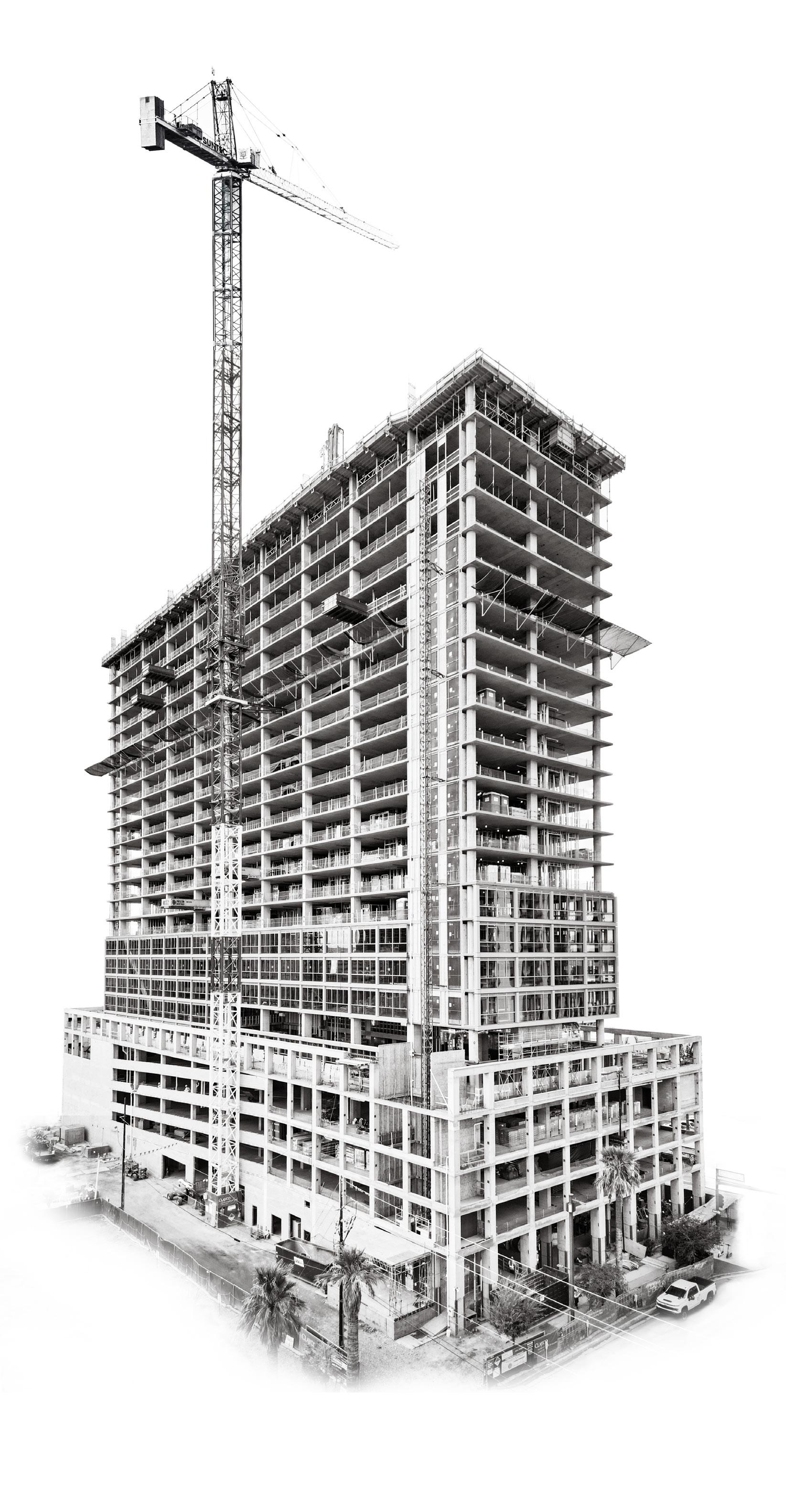

Through the hard work of our skilled craftsmen, a dedication to safety, and our commitment to clients and community, SUNTEC CONCRETE has become the region’s largest commercial concrete company and the foundation of development across the West.

COMMUNITY CARE: A 2025 RED Awards winner, the Valleywise Health Medical Center adds a 673,000-square-foot, 10-story hospital tower and an additional six-story support building to Greater Phoenix’s healthcare infrastructure. This transformative facility replaces a 50-year-old legacy hospital with a state-of-the-art medical hub designed to meet the growing needs of the region. (Photo courtesy of Kitchell.)
in what is getting built. There aren’t as many big healthcare projects out there compared to the last several years — now it’s mostly renovations and expansions. On the other hand, a lot of construction is happening in Native American communities.
As these huge semiconductor and data center developments finish up, more will need to be built to support that growth. So, I think Arizona has a strong, diverse market. If one sector is down, another is up, which carries the industry forward and keeps us all busy.
AZRE: Danielle, you mentioned DP Electric’s workload has plateaued compared to the last few years. Is a slowdown concerning when you know more jobs are coming in 2026?
DPT: We’re a growth-minded organization, so we’ll always strive for that. But having one flat year to catch our breath is not the worst thing. Right now, the focus is on training and improving our processes — which are hard to do when things are hectic. That will make us even more prepared to tackle the opportunities ahead.
NL: Just to add to Danielle’s point — nobody wants the growth chart to look like an EKG monitor. There’s always the push and pull of being strategic, following the right leads and ensuring everything aligns with business needs.
As a self-performing general contractor, we have a large craft workforce. We don’t want these up-and-down spikes of job activity, because that causes releases. Danielle is right — all our companies are focused on growing, but we want to be strategic and not just let the market pull us.

AZRE: When it comes to challenges facing the construction industry, the most talked about one right now is tariffs. Have they had any effect on business, Mark?
MS: It has created uncertainty. Some of our material suppliers were expecting the worst-case scenario, and we saw prices spike at the beginning of the year. Articles always get written when costs go up, but there aren’t as many when they go down — and we have seen some softening. That still causes uncertainty though, which leads to more time spent on bidding before projects
move forward. We always try to keep our clients informed about strategies or workarounds to avoid longer schedules and added costs by bringing other solutions to the table.
AZRE: Danielle, have tariffs caused any disruptions in your work?
DPT: As far as actual cost impact, we haven’t seen much because it’s still all speculation. Clients are always asking us this question, but it’s hard to quantify right now. But the ambiguity of the situation has been a challenge.
AZRE: Have the tariffs, or the instability they cause, been a setback for DPR?
NL: There’s a lot of guessing going on out there about what this could grow into. Will we need to change our procurement process? How will it affect the end product? With all the unknowns, we’re consuming as much information as possible so we can respond responsibly to our clients and trade partners. We’ve built up tools and have subject matter experts to help quiet the noise and not overreact.
AZRE: Anything you’d like to add regarding tariffs, Chris?
CK: The others covered it well, but I want to mention that our industry learned a great deal navigating through the pandemic. To Nathan’s point, it’s all about transparency with our clients, trade partners and internally. That communication helps us all go in the
same direction. There’s uncertainty, but we have to move forward with projects and be open minded on how to approach problems as they come up.
MS: I’d like to add that even though tariffs are the hot topic, there are other problems that need to be solved to keep Arizona growing. Water issues will affect how much we can continue to expand, especially in the Valley.
There are other environmental concerns too. Maricopa County just avoided a potential hurdle regarding air quality, but it’s not over — just delayed.
Power is also critical. Data centers have significant energy requirements. How long until that starts affecting the average consumer?
NL: What’s great about this conversation is that it’s a great example of why the Arizona Builders Alliance and other organizations are so important. It’s about building partnerships — not just having our company names on a wall but taking action as an industry. None of the issues Mark brought up can be solved by a single person or company.
Chris, what you said really resonated with me. Keeping open lines of communication with the trades, manufacturers and our supply chain helps us band together to solve these issues. We all want to be profitable, but it can’t be at the expense of clients because of knee-jerk reactions.
CK: I agree. Talking about our struggles and celebrating our successes is how we become better as an industry.




“... [W]e have a favorable building environment. The challenge will be to maintain those conditions ...
”And I think there’s more transparency now than ever. We’re all facing the same issues, so we might as well try to solve them together.
AZRE: Well said everyone. Is there anything else you all would like to leave readers with?
DPT: I think the Valley still hasn’t reached the level of some of the other big cities. At DP Electric, our goal is to diversify regionally, which is why we branched out into Texas last year. Having a bigger footprint will help us as the market shifts, because no one really knows what will happen in Arizona in the long term. But we're just starting out on that journey.
I’d also like to add that I’m hopeful about the next generation. When it comes to technology, they will help us navigate those changes. The emotional intelligence and leadership capacity I see in young people makes
me confident that we can handle the challenges that arise in the future.
MS: The incredible growth happening in the Arizona market can be traced back to projects like TSMC and others that showed we have a favorable building environment. The challenge will be to maintain those conditions that allow companies to come here and develop projects that pencil out. They’ll need water, power and a workforce, and our industry should do what we can to help meet those needs.
NL: The tools of the trade are changing. Today, we’re armed with iPads and augmented reality to best serve our customers, because everyone wants the work done faster without sacrificing quality. We have to evolve as the market does, and that means educating the next generation.
But we also need to remember our obligation to the craft workers we have
now. There has been a positive shift in how our customers are trying to create a better experience for them. We don’t have robots out on a job site building these structures — human beings are making it happen.
CK: I’ll touch a bit more on technology. Last year, I was telling a young project engineer how 20 years ago, I posted RFIs by hand, explaining all the steps that went into that process. He never even considered of having to do it like that because this digital world we all live in is the only one he knows. So much has changed since I started in the industry — even just in the last five years.
With AI and all the new technology coming out, I think we need to be sure we’re using the right tools and not let ourselves get distracted by the novelty of it all. Having a plan in place will be important because it could go off the rails if we’re not careful.

SteelFab specializes in innovative industrial, structural, and miscellaneous projects; committed to providing outstanding customer service, quality, and safety.
We specialize in structural and miscellaneous steel and focus on the design, fabrication, and installation of various types of steel components that are integral to construction and manufacturing.

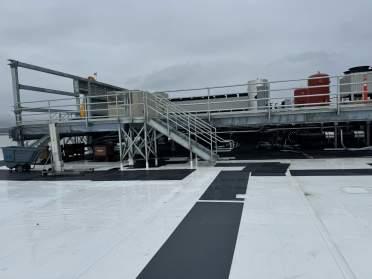






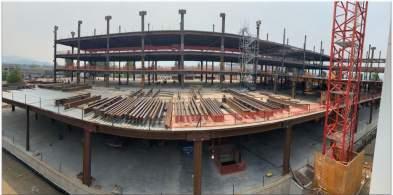


By KYLE BACKER
Construction is a vast industry full of highly skilled individuals, each having their own specialty and focus. When these professionals work together, the resulting projects add value to the community, create new jobs and grow Arizona’s economy. Cultivating solidarity in a competitive market comes with challenges, but the Arizona Builders Alliance (ABA) has successfully created a space for over 380 commercial construction companies to collaborate, learn and promote the industry’s interests.
While those three elements are the core pillars of the organization, Kim Davids, president and CEO of the ABA,
explains that some of the benefits members enjoy can be difficult to quantify.
“As a former general contractor myself, the value of the ABA was always based on the intangibles,” she continues. “I can say we educate and advocate on behalf of the industry, but people underestimate the other factors that are harder to see.”
For example, Davids points out that members who attend the association’s courses not only learn more about a particular topic but also establish bonds with other professionals.
“The purpose of the ABA isn’t to find work or get that next project,” she says.
“It’s about broadening your horizons by networking with people who want to help each other grow. That translates to stronger companies and better leaders.”
While the ABA is focused on commercial construction, membership is open to any general contractor or subcontractor that does work within Arizona regardless of union status. Businesses that support the industry, such as insurance providers, suppliers or bankers, are also welcome to join. Derek Wright, president and CEO of Suntec Concrete, notes that being part of a statewide organization

allows members to tap into resources, relationships and insights that would be difficult to access otherwise.
“It broadens your perspective beyond your local market and connects you to what’s happening across Arizona,” he continues. “You’re part of the conversations that shape policies and priorities impacting our industry. And through networking, education and collective advocacy, your company is better positioned to adapt, grow and lead.”
Which bills become law have serious implications, especially those concerning permitting, zoning, workforce development and safety standards. By
not concentrating on a single region, the ABA can gather feedback from all corners of the state to better represent the industry’s stance on these issues.
Wright adds that the opportunity to speak with lawmakers is a boon to all who work in construction.
“Staying engaged in the legislative process allows us not only to avoid unintended consequences, but also to help shape policies that drive growth, support a strong workforce, and contribute to Arizona’s long-term economic success,” he continues.
Another benefit of the association's broad membership is having the chance to hear how other companies approach
problems across Arizona, according to Brad Llyod, vice president of Lloyd Construction.
“I’ve been doing this my whole life, and you’d think I’d know everything about construction by now — but I don’t,” he continues. “Every time I go to an ABA meeting, I learn how other companies are building things differently than we are — and sometimes they’re doing it better. Sure, we’re all competitors, but we have a relationship where we’re truthfully looking out for each other. It’s something I haven’t seen anywhere else.”
After Lloyd’s father — the founder of Lloyd Construction — passed away, the ABA created the Bill Lloyd Scholarship
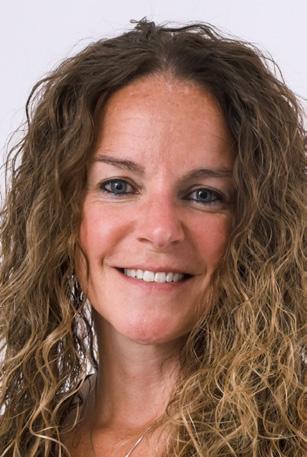


“When we work together, we strengthen the entire construction community, and that benefits everyone.
”
for engineering students attending his alma mater, the University of Arizona.
“Our competition did that out of respect for my father,” Lloyd says. “That’s the type of people who are in this group.”
While members may be bidding on the same jobs, Wright explains that many of the challenges companies ecounter — whether they be legislative, operational or otherwise — affect the entire industry.
“The ABA creates a space for us to come together, share ideas and raise the bar across the board,” he continues. “When we work together, we strengthen the entire construction community, and that benefits everyone.”
While participation in the ABA provides avenues for members to speak out on policy issues and grow professionally, the association is also a way for folks to volunteer their time and talents. Wright says that when he first joined 13 years ago, he saw
his involvement mainly as a way to connect with others in the industry.
“[It] quickly became something much more meaningful,” he continues. “It’s a community of peers I respect, a source of continuous learning and a strong voice for our industry. Above all, it’s given me the opportunity to give back to an industry that has shaped both my career and Suntec’s success.”
Running a company is a high-stakes job that requires long hours and dedication. But even with a packed schedule, Wright lends his expertise to the ABA — even serving as board chair in 2023. In that position, he and others sought to strengthen apprenticeship programs and expand outreach efforts to the next generation of builders.
“Leadership in the industry is an investment in the future of construction, and long-term success of every company building in Arizona. The challenges we face, from labor shortages to workforce development and infrastructure, require a collective effort,” he continues. “Taking on a leadership role with the ABA is one
way I can contribute beyond Suntec to help ensure our industry stays strong, competitive and positioned for future growth.”
The ABA also organizes service projects so members can help those in need. Lloyd has volunteered for multiple initiatives, noting that some have reached upwards of $250,000 in donated labor and materials.
“When these opportunities are brought up in meetings, people jump at the chance to get involved — and not because it will benefit them,” he says. “You don’t do this kind of work thinking it will lead to the next job. We just want to have a positive impact on the community.”
Davids concludes that as people advance in their careers, the desire to invest in others often grows.
“At the ABA, we focus on giving back, whether it’s through community service, volunteering to be an instructor or helping lead our events,” she concludes. “Yes, we want to make people better leaders and support the industry, but it’s also about paying it forward.”


Building
Building Automation & Control
Security & Life Safety Solutions
Energy Management
Support Services



How the ABA advocates for free enterprise and fair competition
By KYLE BACKER
Like any sector, the construction industry must operate within the legal framework determined by elected representatives across multiple layers of government. These policies can have profound impacts on businesses — intended or otherwise — which is why members of the Arizona Builders Alliance (ABA) speak with lawmakers about their top priorities and concerns.
“Every year in the state of Arizona, upwards of 1,800 bills are introduced. About 300 of those bills end up becoming law,” explains Mike Gardner, president of Policy48, which lobbies on behalf of the ABA.
Expecting elected officials to be experts on every issue they encounter is unreasonable, so Gardner’s job is to explain how a particular bill might
affect the commercial construction industry.
“It’s not their fault that they don’t know — they just haven’t been exposed to it. As a former member of the legislature myself, I can tell you there were times I voted on bills that I didn’t fully understand,” Gardner says. “Nobody can know it all, but luckily, we have good people at the ABA who can


Arizona State University’s new Wilson Hall is a five-story, 178,000-square-foot academic building that adds 19 much-needed classrooms and additional faculty space to ASU’s main campus. A finalist in the 2025 RED Awards, this project was delivered by a design-build team of Holder Construction and RSP Architects, replacing a building originally constructed in 1956. (Photo courtesy of RSP Architects.)
educate me, then I can help lawmakers make better informed decisions.”
The ABA’s legislative committee consists of approximately 20 members who regularly meet to review legislation and consider whether the association should support, oppose or remain neutral on it. Those recommendations are then sent to the board of directors for acceptance or modification.
Tim Bee, vice president of government and community relations for the ABA, adds that these members are valuable sources of expertise regarding how a policy may affect operations.
As the former Arizona State Senate President — the only person from Southern Arizona to hold the position since 1974 — Bee works with Gardner, utilizing both of their connections and
combined knowledge of the lawmaking process to relay vital insights about the industry to legislators.
“The committee is privileged to host elected officials from all levels of government and have the opportunity to start building relationships with them,” Bee explains. “For example, [in May], we had a roundtable with Congressman Juan Ciscomani and Department of



Labor Secretary Lori Chavez-DeRemer.”
Bill Headley, senior vice president at Holder Construction and chairman of ABA’s legislative committee, says Bee and Gardner are instrumental in scheduling valuable facetime with policymakers.
“That helps us learn what the legislator’s positions and priorities are, but it also lets us share our thoughts on the issues — whether it’s weighing in on a current proposal or explaining what challenges the industry is facing we think may need to be addressed,” Headley says.
Public services and infrastructure are built for the benefit of all, but the mechanisms government entities use to raise revenue to fund these projects can be difficult to parse. Nearly a decade ago, Arizona’s constructionrelated tax laws were overhauled with the goal of simplification, but Gardner says the new code only made it more confusing.
“We deserve easy to understand tax codes that apply evenly among competitors,” he continues. “If two companies see the tax code differently, one might bid on a job with different assumptions on how much taxes will
need to be applied to that contract. Companies will take different approaches on how to complete a project, but everyone should be on the same page regarding the tax bill.”
With the changes made to the system in 2015, contractors must pay transaction privilege tax when purchasing materials for projects involving maintenance, repair, replacement and alteration, each having its own definition within the statute.
“Those words sound synonymous, but the tax code is applied differently based on what work is being done,” Gardner explains. “That means our friends in the [Arizona Department of Revenue] might look at a construction site and say, ‘Actually, you weren’t altering something, you were repairing it, so you paid your taxes inappropriately.’ We have to fix that.”
Seeing as the government employees performing these audits are often accountants and not contractors, explaining why a job should be in one category instead of another isn't a simple task.
“The construction industry didn’t do a good job explaining to lawmakers what impacts these changes to the tax code would have when the matter was
being debated,” Garnder says. “We don’t have a solution yet, but this is a perfect example of why it’s so important to be at the table, otherwise you end up dealing with hurdles — like the very complicated construction tax code we have today.”
In 1946, Arizona voters passed a ballot initiative enshrining the right to work in the state’s constitution, meaning union membership cannot be mandated to obtain or retain employment. Efforts have been made in recent years to repeal this amendment, with proponents arguing that since all employees benefit from collective bargaining, they should be required to join or financially support the union representing them.
“That caught our attention,” Gardner says. “We’re not anti-union or prounion. If you want to sign up, feel free, but people shouldn’t be forced to. My wife is a teacher and chooses to be part of the union because she sees value in what the dues get her. My dad was also a teacher, but didn’t join because he disagreed with some of the union’s political stances.”
The ABA itself has union and non-union members that all want


Valley Partnership advocates for public policies that advance the interests of the commercial, industrial and master planned real estate development industries.
Our goal? To build a legacy for the future of development. We hope you’ll join us.



Every year in the state of Arizona, upwards of 1,800 bills are introduced. About 300 of those bills end up becoming law.
the best outcomes possible for Arizona’s commercial construction industry. Headley notes that Holder Construction has projects with both types of contractors on the same site without any issues, and the goal is to keep it that way.
Rather than taking a stance against unions, Gardner says the association advocates for a level playing field without favoritism towards one style of shop or another.
“Most lawmakers appreciate that we want contractors to be chosen based on factors like their skills, price and guarantee of work instead of union status,” he continues.
Under Arizona statute, counties, cities and local governments are barred from requiring contractors working on public construction projects to pay a prevailing wage, which is determined through compensation surveys conducted in the region.
Despite this prohibition, Arizona Attorney General Kris Mayes issued an opinion in June 2023 arguing that prevailing wages are a form of minimum wage that municipalities have the authority to regulate. In the wake of that opinion, the cities
— Mike Gardner, president of Policy48.
” “
of Phoenix, Tucson and Tempe all adopted prevailing wage mandates.
“We strongly disagree with the opinion [of the attorney general], so the ABA, along with a few other associations, challenged those ordinances in court based on the fact that they are barred under state law,” Bee explains. “The Goldwater Institute represented us and we were successful, though the case is going through the appeals process. But we are pretty confident that we will win the lawsuit.”
The issue is not with the wage itself, considering most ABA members already pay their workers more than what would be prescribed by the mandates, according to Bee. But the administrative load created by the ordinances, such as weekly paycheck reports to the government, is burdensome, especially for small and medium-sized firms.
“That limits competition,” Bee says. “For large contractors that already work on federal jobs requiring that type of reporting, taking on a prevailing wage contract probably won’t be a problem. But companies that don’t have the necessary staff or infrastructure in place likely won’t even try. When we surveyed our members, 75% indicated that they wouldn’t bid on projects with prevailing wage requirements.”
Holder Construction works on federal projects, and Headley agrees that satisfying the reporting criteria is the most challenging aspect. Both general contractors and trade partners need additional administrative staff to prove to the government that the stipulations are being met, even though Holder Construction pays their employees above the prevailing wage.
“When someone says to a legislator, ‘We want a prevailing wage to make sure the workers on site are getting reasonable pay,’ it makes a lot of sense,” Headley continues. “But if you look at what that entails, there’s a whole lot more to it that it seems.”
Gardner adds that even though prevailing wage ordinances don’t say anything regarding union status, outcomes tend to lean in that direction.
“People that follow prevailing wage statutes are more likely to be union members,” he continues. “It starts to feel like code for ‘you need to be part of the union to get this job.’ Larger companies with union stewards end up winning those contracts instead of smaller, merit-based shops. Again, we have no problems with unions, but you shouldn’t get bonus points because you happen to be in one. Let the market figure itself out.”




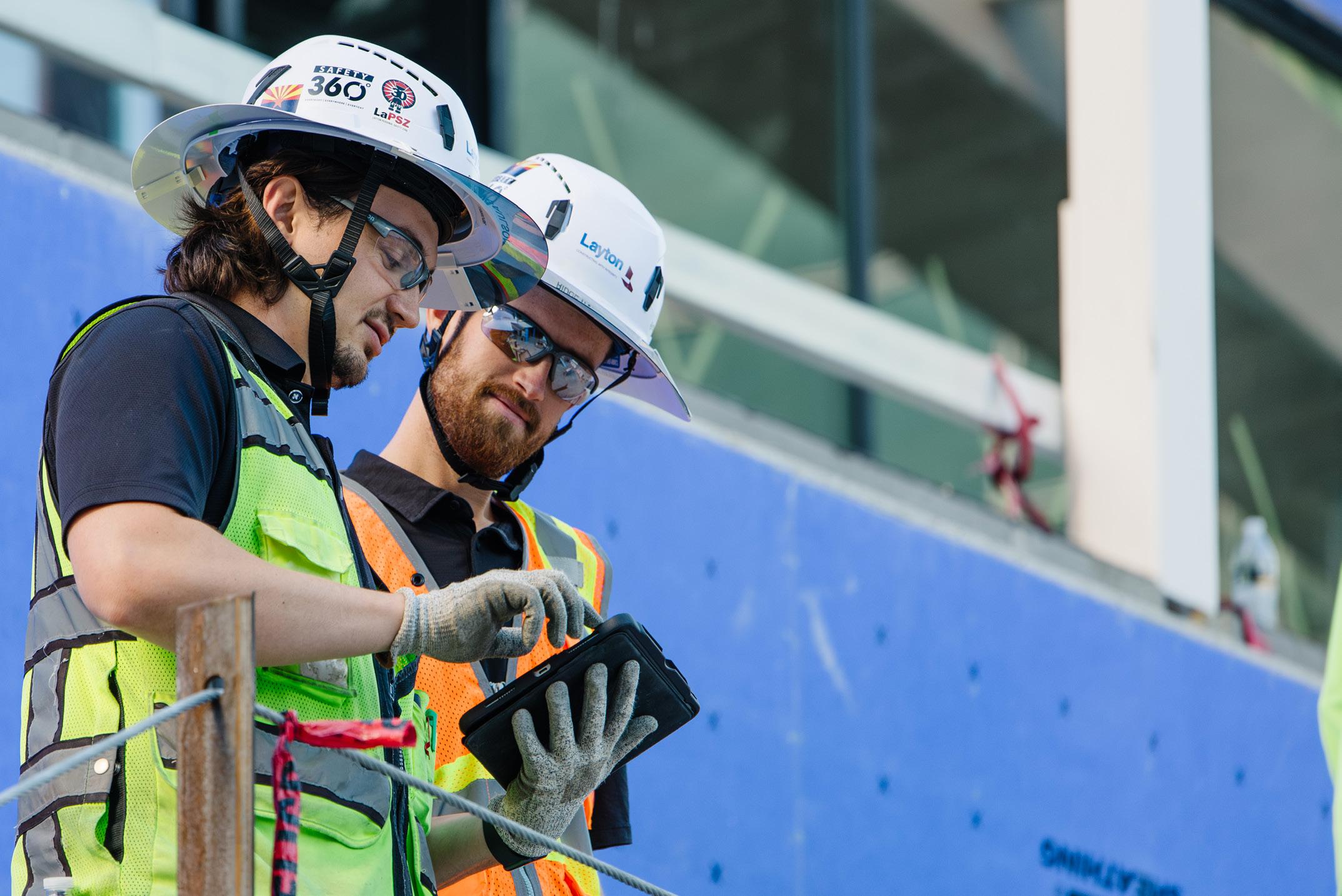




Members of the Arizona Builders Alliance (ABA) spent the last year breaking ground, constructing and delivering some of the state’s best developments. Here are just a few noteworthy projects that ABA members have worked on in 2025.
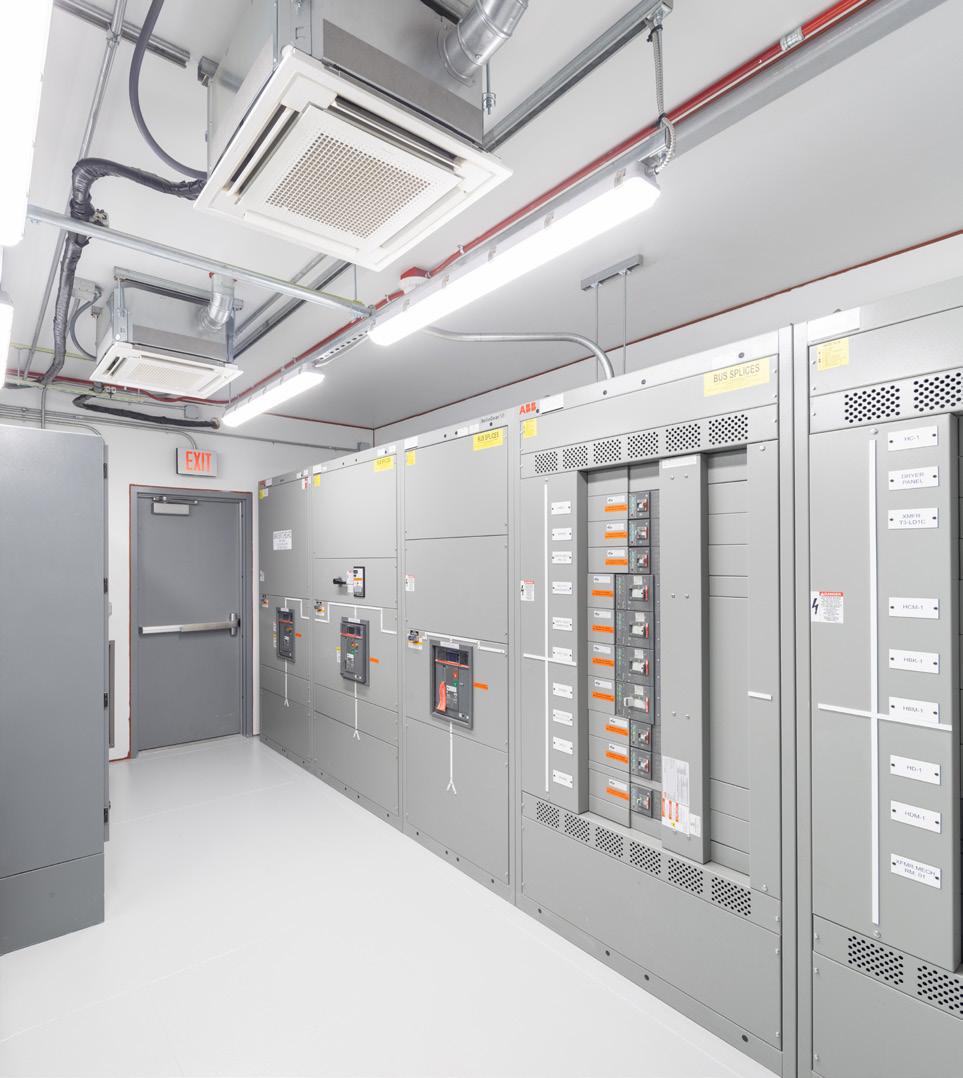
PROJECT NAME:
DEVELOPER AND/OR GENERAL CONTRACTOR: DPR Construction
ARCHITECT: Wood Patel and Associates, Inc., Vanderweil Engineers
SUBCONTRACTORS: Evergreen Innovation Group, Sturgeon Electric
LOCATION: 600 E. Veterans Way, Tempe
START DATE: April 2024
COMPLETION DATE: April 2025
DETAILS: DPR worked with Evergreen Innovation Group and Sturgeon Electric to plan the replacement of the original electrical service entrance, housed in a challenging location within ASU Desert Financial Arena. The solution included a prefabricated electrical room and series of strategic electrical cut-overs to re-feed the entire arena without disruption to ongoing operations.

NAME:
DEVELOPER AND/OR GENERAL CONTRACTOR: Kitchell
ARCHITECT: Hoefer Welker
SUBCONTRACTORS: Bergelectric, Comfort Systems USA, HACI Mechanical, Red Cedar Steel, Pete King Construction
LOCATION: 18500 N. 64th St., Phoenix
START DATE: January 2025
COMPLETION DATE: September 2026
DETAILS: This new 60,000-square-foot, three-story inpatient rehabilitation hospital on the Mayo Clinic campus includes 60 beds, rehab gyms, clinical spaces and an innovation hub featuring advanced rehabilitation technologies — built in partnership with Brooks Healthcare and Mayo Clinic.



DEVELOPER AND/OR GENERAL CONTRACTOR: Hunt-Penta Joint Venture ARCHITECT: JCJ Architects
SUBCONTRACTORS: Ricor, AROK, AMFAB Steel, Delta Diversified Electrical, Bel-Aire Mechanical
LOCATION: 8200 N. Sarival Ave., Waddell START DATE: April 2023
COMPLETION DATE: April 2025
DETAILS: This greenfield project consists of a 200,000-square-foot casino situated on a 110-acre site with an adjacent free-standing central utility plant and a 2,034 space, five-story precast concrete parking garage. The casino features a 55,000-square-foot gaming floor, three dining venues, sportsbook, VIP lounge, as well as a full array of back-of-house offices, employee dining and other support services areas.


DEVELOPER AND/OR GENERAL CONTRACTOR: Kitchell
ARCHITECT: Kollin Altomare Architects
SUBCONTRACTORS: S&S Paving, Stone Cold Masonry, Concrete Masters, Sanders & Wohrman, NKW, Inc.
LOCATION: 7575 E. Princess Dr., Scottsdale
START DATE: March 2024
COMPLETION DATE: June 2025
DETAILS: Located at the Fairmont Scottsdale Princess Resort, this 320,700-square-foot, three-story cast-in-place parking garage includes 989 stalls, valet spaces, on-grade parking, landscaping and full site work, plus 10 EV and 10 golf cart charging stations.

DEVELOPER AND/OR GENERAL CONTRACTOR: Barker Contracting
ARCHITECT: Seaver Franks Architects
SUBCONTRACTORS: Steadfast Structures, Landmark Metal Builders, Sun Valley Drywall, Achilles, Blueair
LOCATION: 6000 E. Valencia Rd., Tucson
START DATE: October 2024
COMPLETION DATE: February 2025
DETAILS: This project consisted of a pre-engineered metal buildings with a viewing deck and tank track for demonstrations.
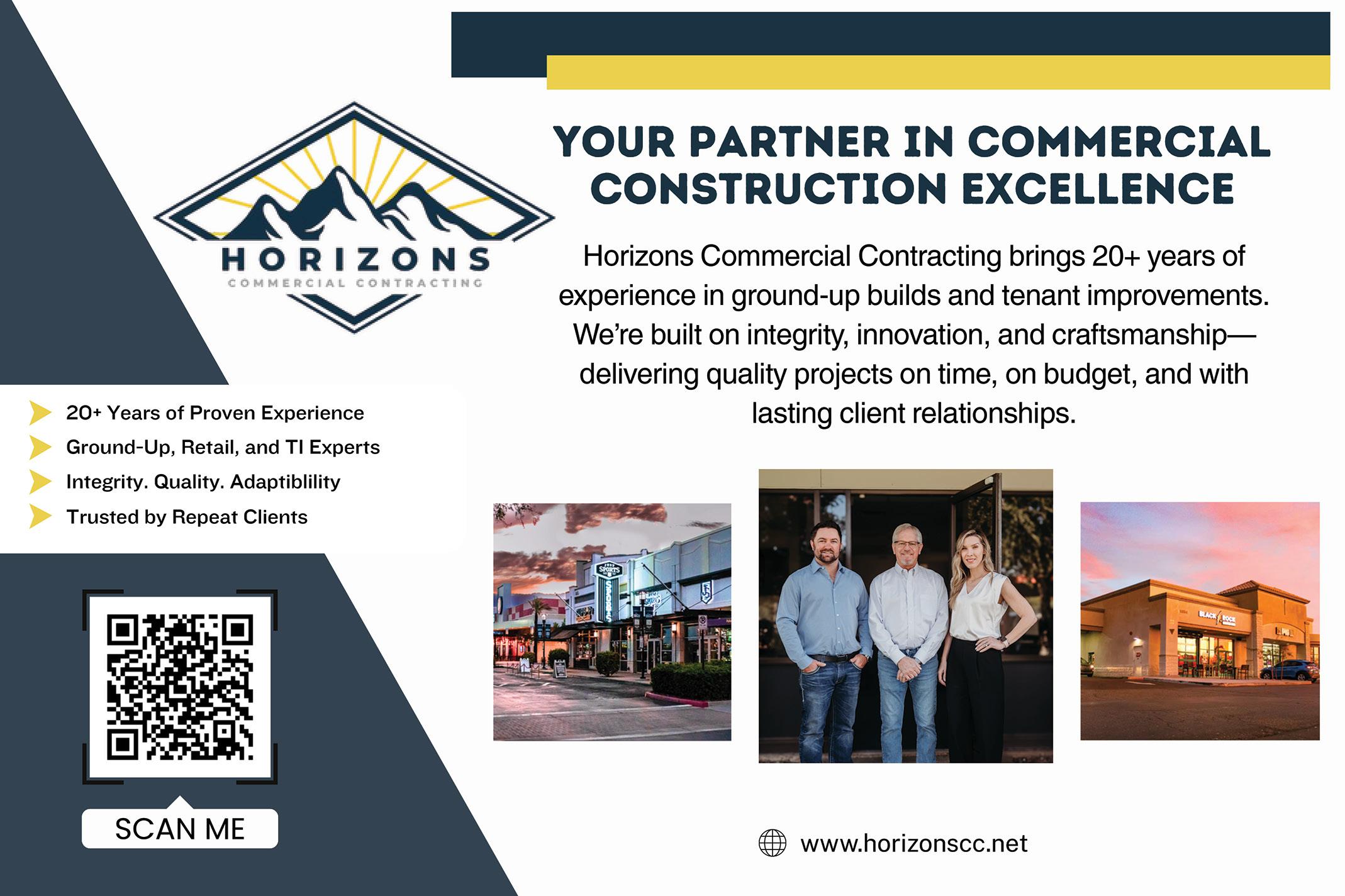

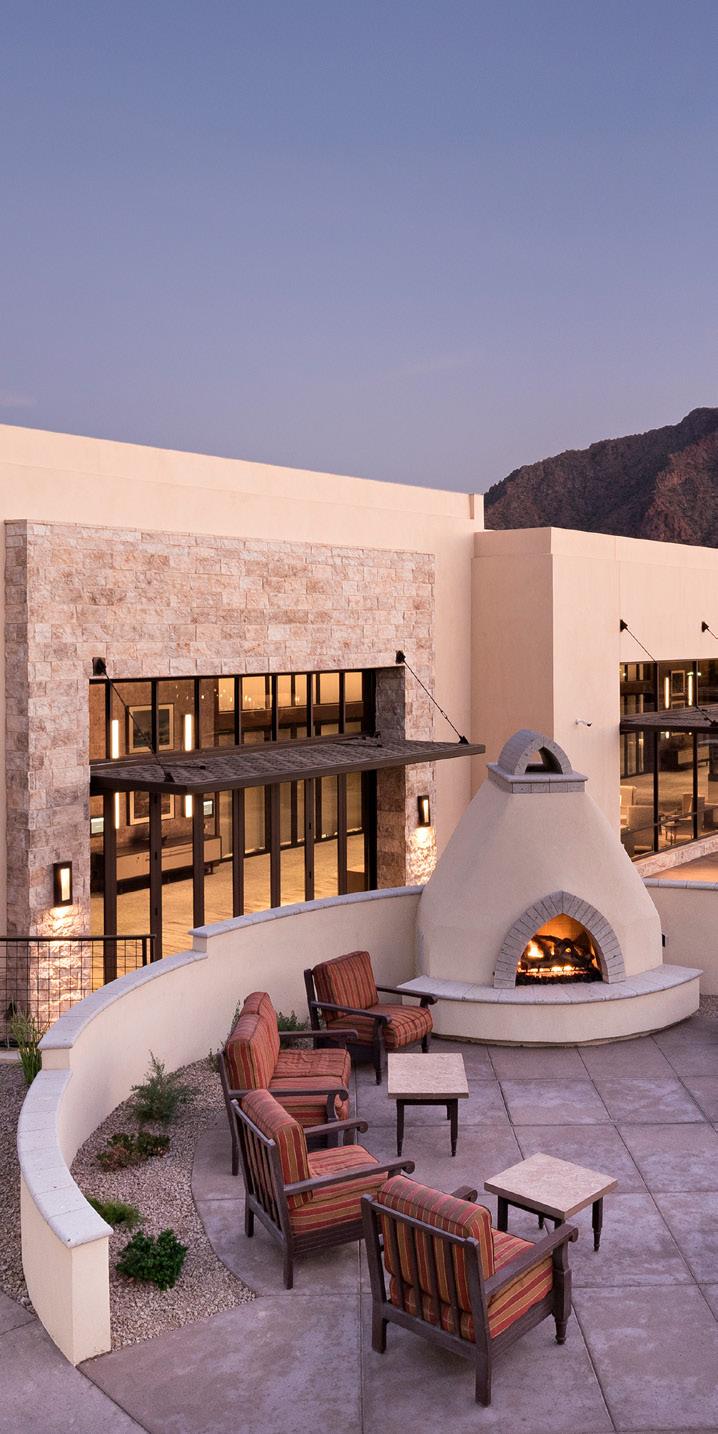


DEVELOPER AND/OR GENERAL CONTRACTOR: Pascua Yaqui Tribe, Kappcon
ARCHITECT: Travois
SUBCONTRACTORS: Dominguez Earthmovers, Accura Systems of Tucson, Azurite Builders, Facelift Painting, Sun Mechanical
LOCATION: 8000 S. Camino Cocoim, Tucson START DATE: April 2024
COMPLETION DATE: February 2025
DETAILS: A multifamily development for the Pascua Yaqui Tribe, the project offers 50-units in a 76,095-square-foot apartment building with associated parking.


DEVELOPER AND/OR GENERAL CONTRACTOR: Lloyd Construction Company
ARCHITECT: Line and Space
SUBCONTRACTORS: Achilles, Blanco Concrete, Stark Electric, Days Excavating, Hallmark Landscape and Design
LOCATION: 1010 W. Miracle Mile, Tucson
START DATE: December 2019
COMPLETION DATE: March 2025
DETAILS: Pima County Northwest Service Center is a 39,000-square-foot, two-story facility housing multiple Pima County departments. It also offers a variety of public services including workforce development, community assistance, food safety and vital records services.
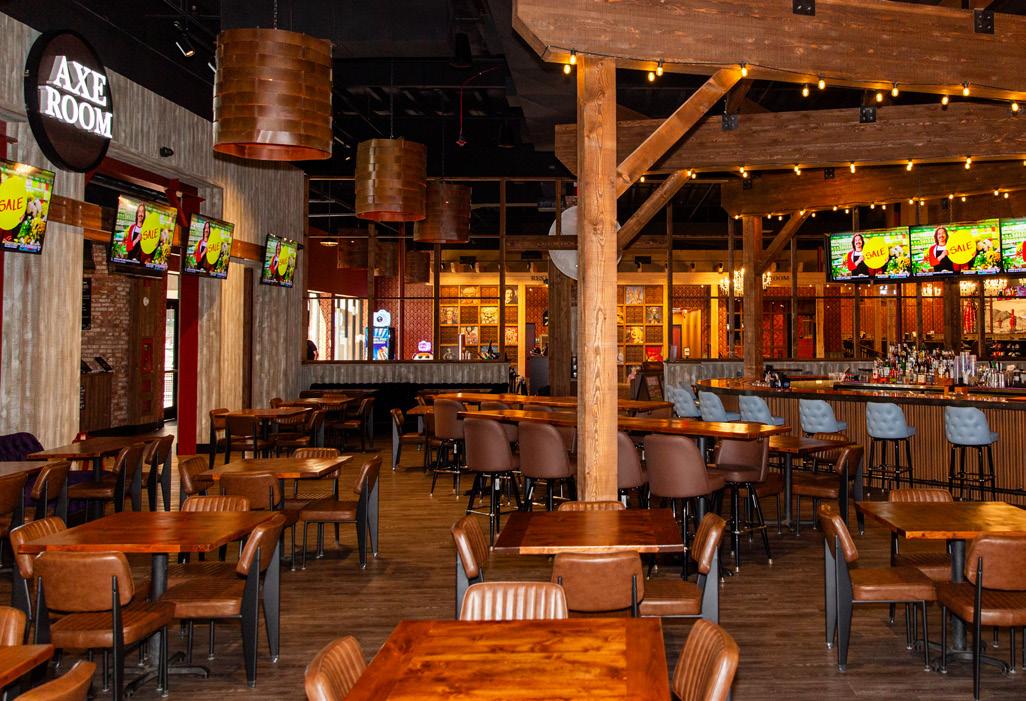
DEVELOPER AND/OR GENERAL CONTRACTOR: Barker Contracting
ARCHITECT: A23 Studios
SUBCONTRACTORS: Achilles, Tucson Commercial Carpet, Coles Custom Painting, E&K Construction
LOCATION: 4811 E. Grant Rd., Tucson
START DATE: June 2024
COMPLETION DATE: March 2025
DETAILS: Roadhouse Cinemas expanded their existing footprint by 36,000 square feet with a project consisting of six axe throwing lanes, crazy darts, 12 bowling lanes, a 7,200-square-foot laser tag arena, five micro theaters, over 130 arcade games, full bar, private event room and access to the existing Roadhouse Cinemas.
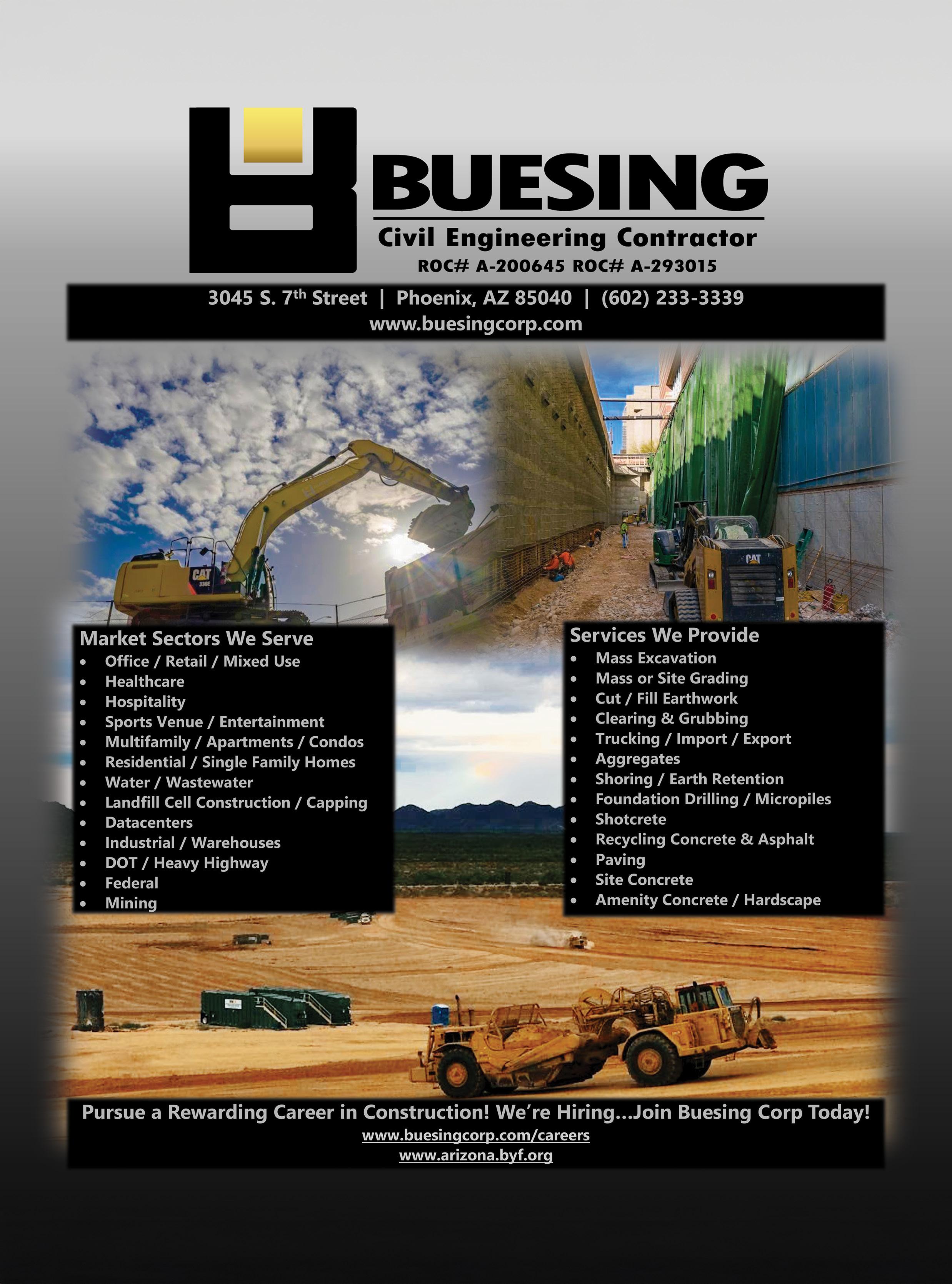
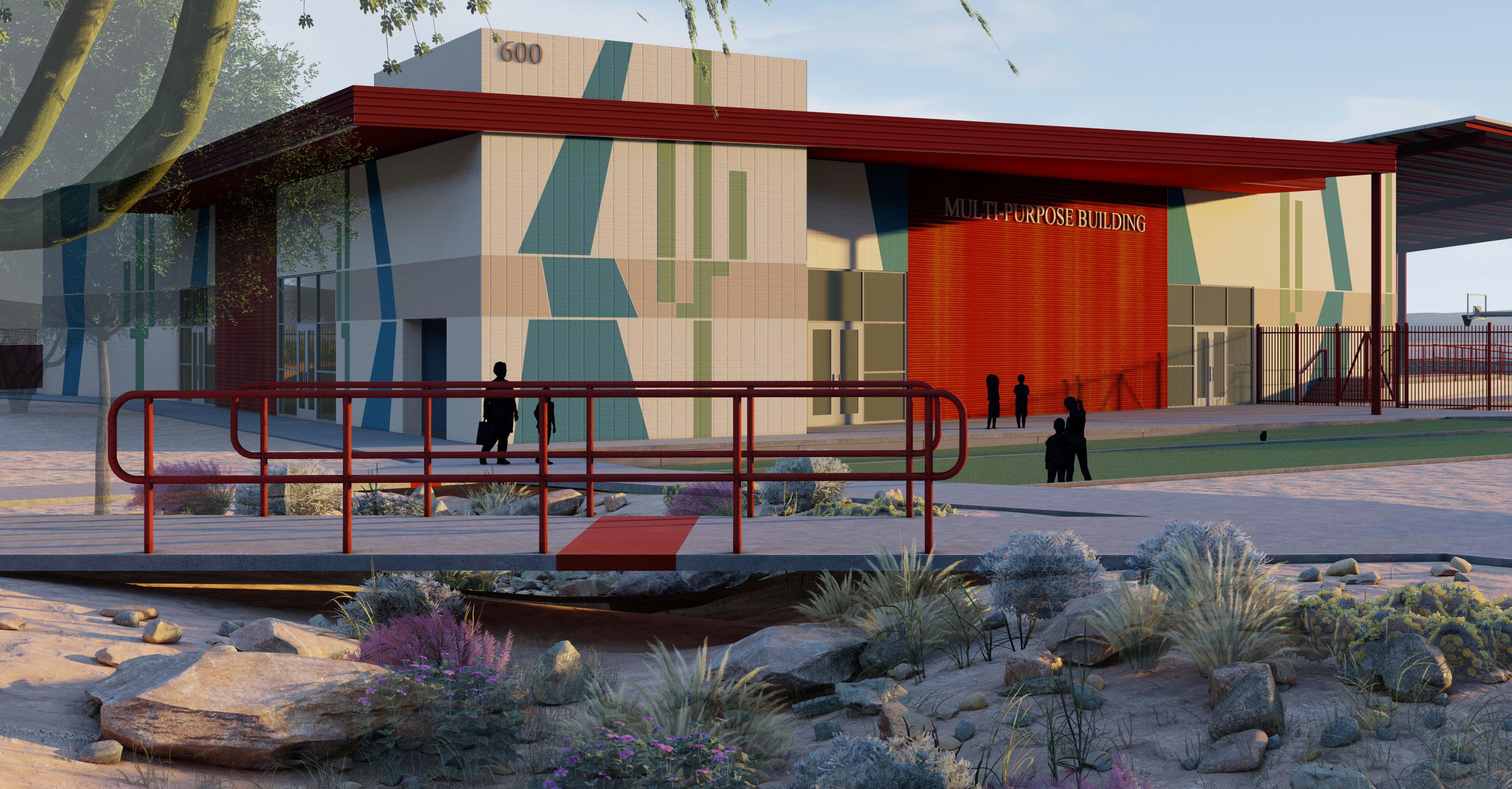
PROJECT NAME:
DEVELOPER AND/OR GENERAL CONTRACTOR: Concord General Contracting ARCHITECT: Swaim Associates
LOCATION: 8150 S. Rocking K Ranch Loop, Tucson START DATE: April 2024
COMPLETION DATE: July 2025
DETAILS: A new K–8 school for Vail School District, this 25-acre campus includes classrooms, a multipurpose auditorium, SPED spaces, and outdoor learning/play areas. Designed for energy efficiency and walkability, features include solar canopies, natural drainage and a rooftop-fed creek for monsoon season. Phase 2 included additional classrooms and sports facilities.

DEVELOPER AND/OR GENERAL CONTRACTOR: Hatteras Sky, JE Dunn Construction Company
ARCHITECT: Shepley Bulfinch
SUBCONTRACTORS: Suntec Concrete, SECON Electric, HACI Mechanical, JFN Plumbing
LOCATION: 802 N. 1st Ave., Phoenix
START DATE: July 2022
COMPLETION DATE: August 2025
DETAILS: Saiya is a new 23-story mixed-use, high-rise project in Downtown Phoenix’s Roosevelt Row Arts District that features 389 residential units, 12,550-square-feet of street-level retail and amenity spaces. Amenities include two swimming pools, outdoor courtyards, fitness center, game room, rooftop kitchen and lounge, dog park and concierge services.

DEVELOPER AND/OR GENERAL CONTRACTOR: MYCON General Contractors
ARCHITECT: Perkins&Will
SUBCONTRACTORS: B&B Concrete
LOCATION: 870 E. Tucson Marketplace Blvd., Tucson
START DATE: April 2024
COMPLETION DATE: December 2025
DETAILS: The new three-story, 55,098-square-foot hospital will feature 48 modern patient rooms, two rehab therapy gyms with advanced technologies and state-of-the-art equipment.

We believe education is so important that we privately fund our own school and apprenticeship, Phoenix Electrical Training Alliance.





